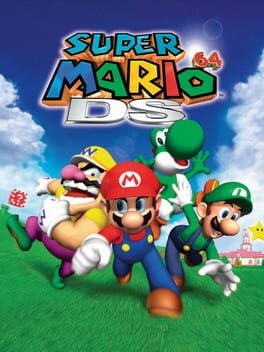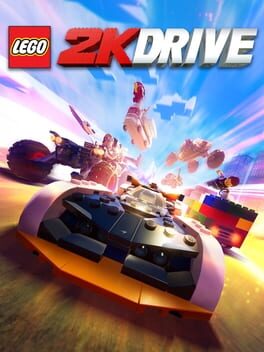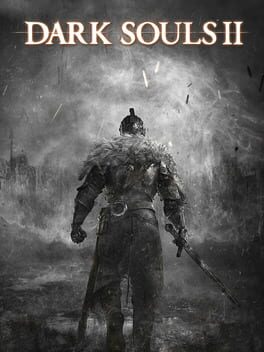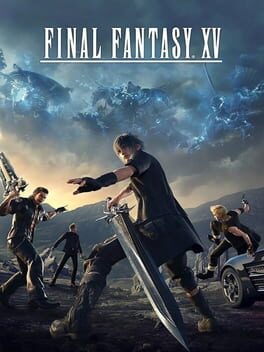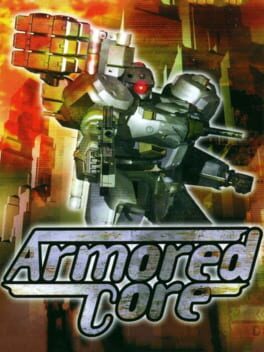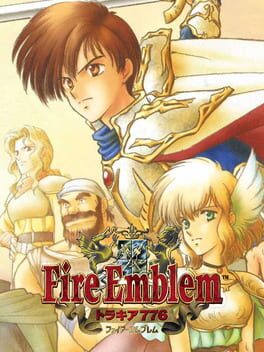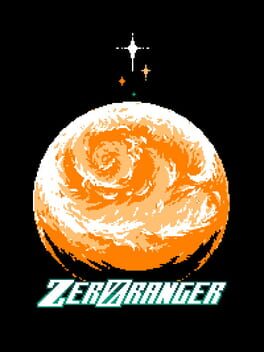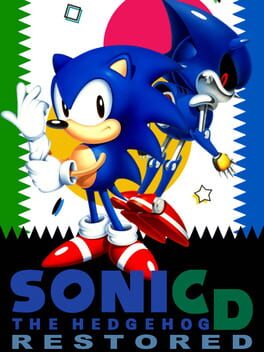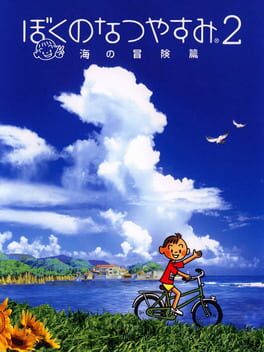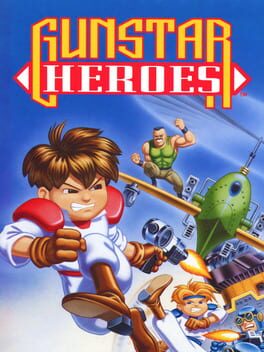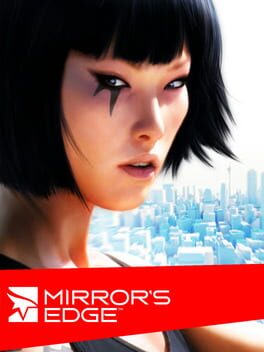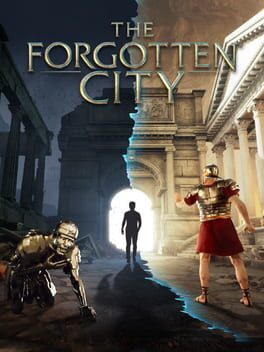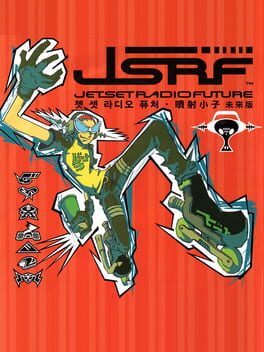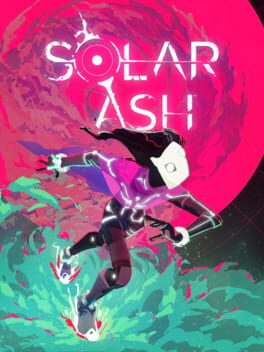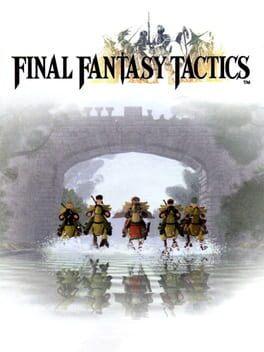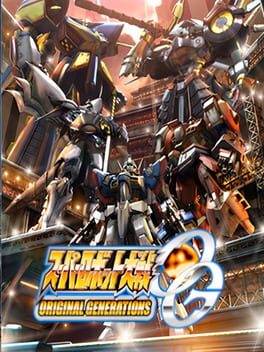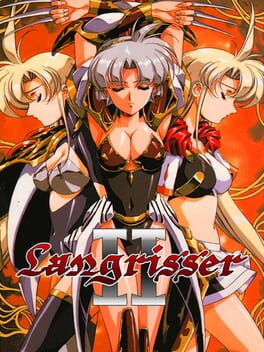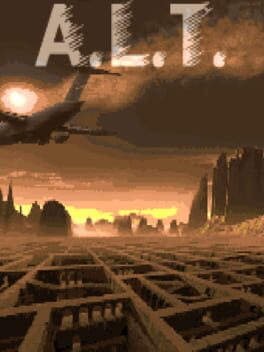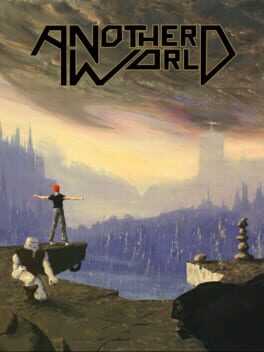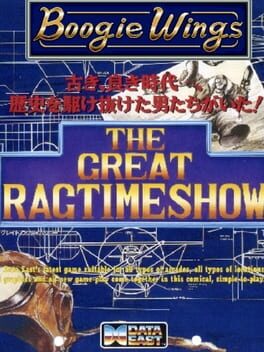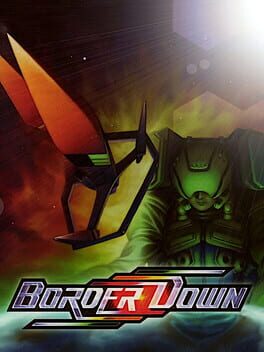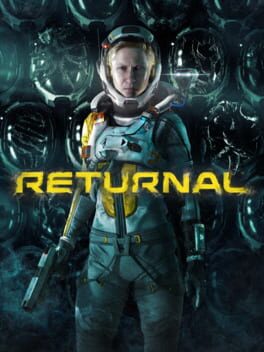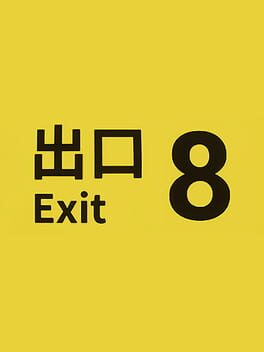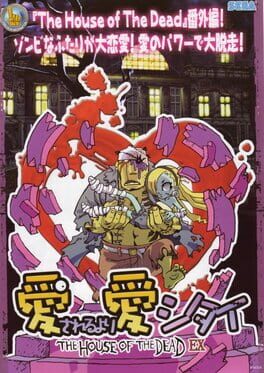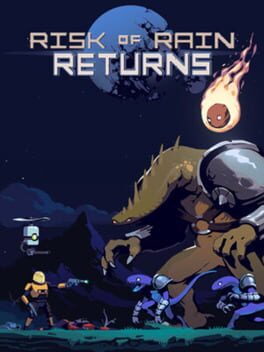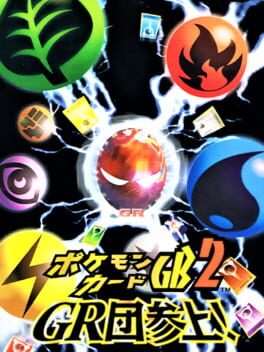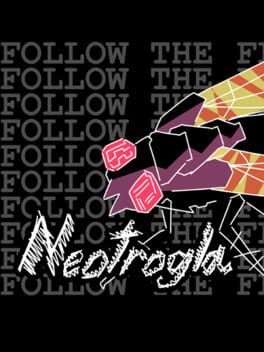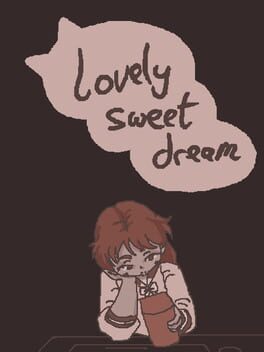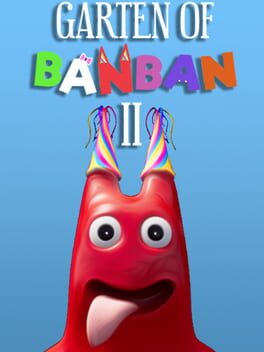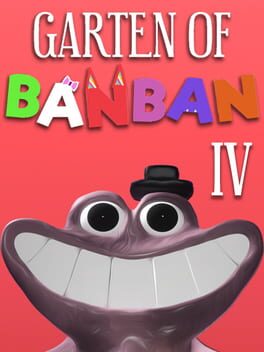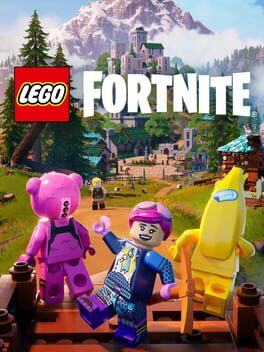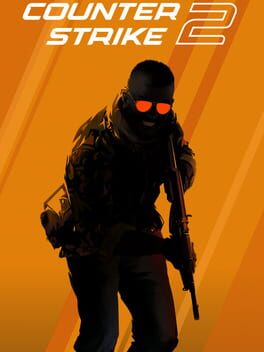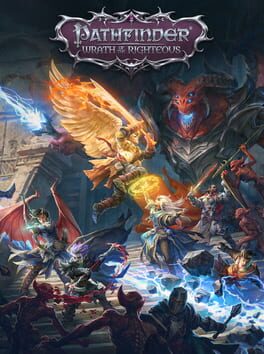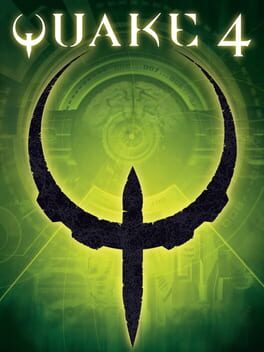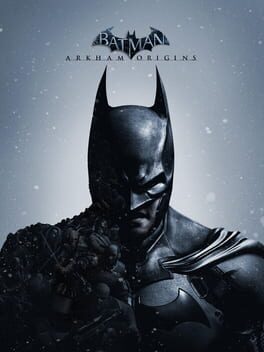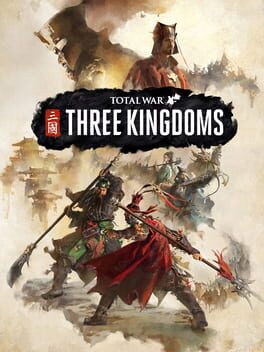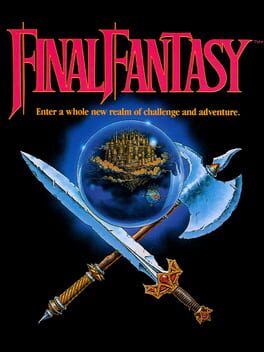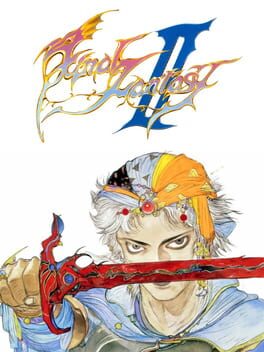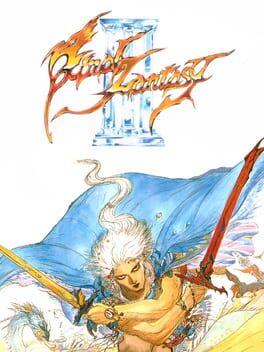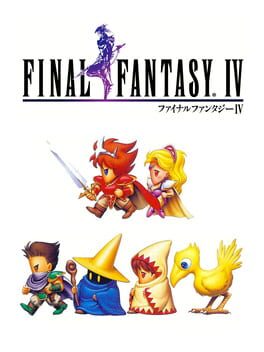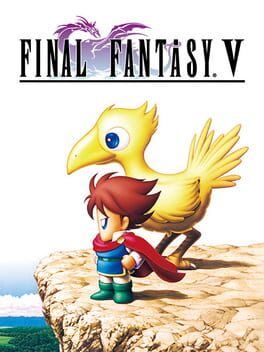Lordg
201 reviews liked by Lordg
Super Mario 64 DS
2004
nintendo salvaging the american gaming market with the release of the NES was the modern inflection point for our industry, in some ways that are less obvious than others. the console enshrined gaming as a medium with legitimacy beyond the original fad-like relevance of the atari VCS, but the centralization of this success around nintendo gave the company an uncomfortable amount of leverage. this immediately portended poorly with the simultaneous release of the console's killer app: super mario bros., which gestured to a sinister rejection of the console's original intent. look to the japanese launch line-up and you'll see arcade staples such as donkey kong and popeye; games that lauded precise, restricted play with definitive rules and short runtimes. super mario bros. was a refutation of this design philosophy in favor of the loosey-goosey variable jump heights, frequent health restoration items, and long hallways of copy-paste content replacing the tightly paced experiences that defined the era before. the NES still featured arguably the greatest console expressions of the rigorous arcade action experiences that defined the '80s - castlevania, ninja gaiden, and the early mega mans all come to mind - but the seeds super mario bros. planted would presage a shift into more and more experiences that coddled the player rather than testing their fortitude. in some ways, super mario bros. lit the match that would leave our gaming landscape in the smoldering ruins of the AAA design philosophy.
the '90s only deepened nintendo's exploration of trends that would further attempt to curb the arcade philosophy, which still floated on thanks to the valiant efforts of their competitors at sega, capcom, konami, and others. super mario world kicked off nintendo's 16-bit era with an explicitly non-linear world map that favored the illusion of charting unknown lands over the concrete reality of learning play fundamentals, and its pseudo-sequel yoshi's island would further de-emphasize actual platforming chops by giving the player a generous hover and grading them on their ability to pixel hunt for collectables rather than play well, but the most stunning example of nintendo's decadence in this era is undoubtedly donkey kong '94. the original donkey kong had four levels tightly wound around a fixed jump arc and limited ability for mario to deal with obstacles; its ostensible "remake" shat all over its legacy by infusing mario's toolkit with such ridiculous pablum such as exaggerated flip jumps, handstands, and other such acrobatics. by this point nintendo was engaging in blatant historical revisionism, turning this cornerstone of the genre into a bug-eyed circus romp, stuffed with dozens of new puzzle-centric levels that completely jettisoned any semblance of toolkit-oriented level design from the original game. and yet, this was the final fissure before the dam fully burst in 1996.
with the release of the nintendo 64 came the death knell of the industry: the analog stick. nintendo's most cunning engineers and depraved designers had cooked up a new way to hand unprecedented control to the player and tear down all obstacles standing in the way of the paternalistic head-pat of a "job well done" that came with finishing a game. with it also came this demonic interloper's physical vessel, super mario 64; the refined, sneering coalescence of all of nintendo's design tendencies up to this point. see here a game with enormous, previously unfathomable player expression, with virtually every objective solvable in myriad different ways to accommodate those who refuse to engage with the essential challenges the game offers. too lazy to even attempt some challenges at all? feel free to skip over a third of the game's "star" objectives on your way to the final boss; you can almost see the designers snickering as they copy-pasted objectives left and right, knowing that the majority of their player base would never even catch them in the act due to their zombie-like waddle to the atrociously easy finish line. even as arcade games stood proud at the apex of the early 3D era, super mario 64 pulled the ground out underneath them, leaving millions of gamers flocking to similar experiences bereft of the true game design fundamentals that had existed since the origination of the medium.
this context is long but hopefully sobering to you, the reader, likely a gamer so inoculated by the drip-feed of modern AAA slop that you likely have regarded super mario 64 as a milestone in 3D design up to now. yet, it also serves as a stark contrast to super mario 64 ds, a revelation and admission of guilt by nintendo a decade after their donkey kong remake plunged modern platformers into oblivion.
the d-pad alone is cool water against the brow of one in the throes of a desert of permissive design techniques. tightening up the input space from the shallow dazzle of an analog surface to the limitations of eight directions instantly reframes the way one looks at the open environments of the original super mario 64. sure, there's a touch screen option, but the awkward translation of a stick to the literal flat surface of the screen seems to be intentionally hobbled in order to encourage use of the d-pad. while moving in a straight line may still be simple, any sort of other action now begets a pause for reflection over the exact way one should proceed. is the sharp 45 or 90 degree turn to one side "good enough", or will I need to make a camera adjustment in-place? for this bridge, what combination of angles should I concoct in order to work through this section? the removal of analog control also forces the addition of an extra button to differentiate between running and walking, slapping the player on the wrist if they try to gently segue between the two states as in the original. the precision rewards those who aim to learn their way around the rapid shifts in speed while punishing those who hope they can squeak by with the same sloppy handling that the original game allowed.
on its own this change is crucial, but it still doesn't cure the ills of the original's permissive objective structure. however, the remake wisely adds a new character selection system that subtly injects routing fundamentals into the game's core. for starters: each of the characters has a separate moveset, and while some characters such as yoshi and luigi regrettably have the floaty hover and scuttle that I disdained in yoshi's island, it's at least balanced here by removing other key aspects of their kit such as wall jumps and punches. the addition of wario gives the game a proper "hard mode," with wario's lumbering speed and poor jump characteristics putting much-needed limiters on the game's handling. for objectives that now explicitly require wario to complete, the game is effectively barring you from abusing the superior movement of the original game by forcing you into a much more limited toolkit with rigid d-pad controls, the kind of limitations this game absolutely needed in order to shine.
that last point about objectives that specifically require a given character is key: the remake segments its objectives based on which characters are viable to use to complete them. however, while in some cases the game may telegraph which specific characters are required for a particular task, in many cases the "correct" solution is actually to bounce between the characters in real time. this is done by strategically placing hats for each of the characters throughout the map - some attached to enemies and some free-floating - which allow the player to switch on the fly. this adds new detours to the otherwise simple objectives that vastly increases their complexity: which toolkit is best suited for which part of each mission? how should my route be planned around the level to accommodate hats I need to pick up? will I be able to defeat an enemy that's guarding the hat if I had to? this decision-making fleshes out what was previously a mindless experience.
there's one additional element to this system that truly elevates it to something resembling the arcade experiences of yore. while you can enter a level as any character, entering as yoshi allows you to preemptively don the cap of any other character as you spawn in, preventing the player from having to back-track to switch characters. on the surface this seems like another ill-advised QoL feature, but some subtle features reveal something more fascinating. yoshi has no cap associated with him, so to play as him, one must enter the level with him. however, you often need to switch to another character in the middle of a level. how do you switch back? by taking damage. to solve the ridiculously overstuffed eight piece health bar of the original, this remake transforms it into a resource you expend in order to undergo transformation. sure, one could theoretically collect coins in order to replenish this resource, but this adds a new layer onto the routing that simply didn't exist in the original game, where there were so many ways to circumvent obstacles with the permissive controls that getting hit in the first place was often harder than completing the objective. by reframing the way that the player looks at their heath gauge, the game is calling to mind classic beat 'em ups, where the health gauge often doubled as a resource to expend for powerful AoE supers.
the game still suffers from much of the rotten design at the core of its forebear; these above changes are phenomenal additions, but they're grafted onto a framework that's crumbling as you delve into it. regardless, the effort is admirable. for a brief moment, nintendo offered an apology to all of those hurt by their curbstomping of the design philosophies that springboarded them into juggernaut status in the first place, and they revitalized classic design perspectives for many millions more who first entered the world of gaming after it had already been tainted by nintendo's misdeeds. the galaxy duology, released a few years after this game, attempted to rework the series from the ground up with a new appreciation for arcade design by limiting the bloated toolkit of previous games and linearizing levels, but the damage had already been done. the modern switch era has magnified nintendo's worst tendencies, putting proper execution and mechanical comprehension to the wayside as they accelerate the disturbing "the player is always right" principles that have infested their games since that original super mario bros. by looking at super mario 64 ds in this context, we at least get a glimpse of what a better world could have looked like had nintendo listened to their elders all along.
the '90s only deepened nintendo's exploration of trends that would further attempt to curb the arcade philosophy, which still floated on thanks to the valiant efforts of their competitors at sega, capcom, konami, and others. super mario world kicked off nintendo's 16-bit era with an explicitly non-linear world map that favored the illusion of charting unknown lands over the concrete reality of learning play fundamentals, and its pseudo-sequel yoshi's island would further de-emphasize actual platforming chops by giving the player a generous hover and grading them on their ability to pixel hunt for collectables rather than play well, but the most stunning example of nintendo's decadence in this era is undoubtedly donkey kong '94. the original donkey kong had four levels tightly wound around a fixed jump arc and limited ability for mario to deal with obstacles; its ostensible "remake" shat all over its legacy by infusing mario's toolkit with such ridiculous pablum such as exaggerated flip jumps, handstands, and other such acrobatics. by this point nintendo was engaging in blatant historical revisionism, turning this cornerstone of the genre into a bug-eyed circus romp, stuffed with dozens of new puzzle-centric levels that completely jettisoned any semblance of toolkit-oriented level design from the original game. and yet, this was the final fissure before the dam fully burst in 1996.
with the release of the nintendo 64 came the death knell of the industry: the analog stick. nintendo's most cunning engineers and depraved designers had cooked up a new way to hand unprecedented control to the player and tear down all obstacles standing in the way of the paternalistic head-pat of a "job well done" that came with finishing a game. with it also came this demonic interloper's physical vessel, super mario 64; the refined, sneering coalescence of all of nintendo's design tendencies up to this point. see here a game with enormous, previously unfathomable player expression, with virtually every objective solvable in myriad different ways to accommodate those who refuse to engage with the essential challenges the game offers. too lazy to even attempt some challenges at all? feel free to skip over a third of the game's "star" objectives on your way to the final boss; you can almost see the designers snickering as they copy-pasted objectives left and right, knowing that the majority of their player base would never even catch them in the act due to their zombie-like waddle to the atrociously easy finish line. even as arcade games stood proud at the apex of the early 3D era, super mario 64 pulled the ground out underneath them, leaving millions of gamers flocking to similar experiences bereft of the true game design fundamentals that had existed since the origination of the medium.
this context is long but hopefully sobering to you, the reader, likely a gamer so inoculated by the drip-feed of modern AAA slop that you likely have regarded super mario 64 as a milestone in 3D design up to now. yet, it also serves as a stark contrast to super mario 64 ds, a revelation and admission of guilt by nintendo a decade after their donkey kong remake plunged modern platformers into oblivion.
the d-pad alone is cool water against the brow of one in the throes of a desert of permissive design techniques. tightening up the input space from the shallow dazzle of an analog surface to the limitations of eight directions instantly reframes the way one looks at the open environments of the original super mario 64. sure, there's a touch screen option, but the awkward translation of a stick to the literal flat surface of the screen seems to be intentionally hobbled in order to encourage use of the d-pad. while moving in a straight line may still be simple, any sort of other action now begets a pause for reflection over the exact way one should proceed. is the sharp 45 or 90 degree turn to one side "good enough", or will I need to make a camera adjustment in-place? for this bridge, what combination of angles should I concoct in order to work through this section? the removal of analog control also forces the addition of an extra button to differentiate between running and walking, slapping the player on the wrist if they try to gently segue between the two states as in the original. the precision rewards those who aim to learn their way around the rapid shifts in speed while punishing those who hope they can squeak by with the same sloppy handling that the original game allowed.
on its own this change is crucial, but it still doesn't cure the ills of the original's permissive objective structure. however, the remake wisely adds a new character selection system that subtly injects routing fundamentals into the game's core. for starters: each of the characters has a separate moveset, and while some characters such as yoshi and luigi regrettably have the floaty hover and scuttle that I disdained in yoshi's island, it's at least balanced here by removing other key aspects of their kit such as wall jumps and punches. the addition of wario gives the game a proper "hard mode," with wario's lumbering speed and poor jump characteristics putting much-needed limiters on the game's handling. for objectives that now explicitly require wario to complete, the game is effectively barring you from abusing the superior movement of the original game by forcing you into a much more limited toolkit with rigid d-pad controls, the kind of limitations this game absolutely needed in order to shine.
that last point about objectives that specifically require a given character is key: the remake segments its objectives based on which characters are viable to use to complete them. however, while in some cases the game may telegraph which specific characters are required for a particular task, in many cases the "correct" solution is actually to bounce between the characters in real time. this is done by strategically placing hats for each of the characters throughout the map - some attached to enemies and some free-floating - which allow the player to switch on the fly. this adds new detours to the otherwise simple objectives that vastly increases their complexity: which toolkit is best suited for which part of each mission? how should my route be planned around the level to accommodate hats I need to pick up? will I be able to defeat an enemy that's guarding the hat if I had to? this decision-making fleshes out what was previously a mindless experience.
there's one additional element to this system that truly elevates it to something resembling the arcade experiences of yore. while you can enter a level as any character, entering as yoshi allows you to preemptively don the cap of any other character as you spawn in, preventing the player from having to back-track to switch characters. on the surface this seems like another ill-advised QoL feature, but some subtle features reveal something more fascinating. yoshi has no cap associated with him, so to play as him, one must enter the level with him. however, you often need to switch to another character in the middle of a level. how do you switch back? by taking damage. to solve the ridiculously overstuffed eight piece health bar of the original, this remake transforms it into a resource you expend in order to undergo transformation. sure, one could theoretically collect coins in order to replenish this resource, but this adds a new layer onto the routing that simply didn't exist in the original game, where there were so many ways to circumvent obstacles with the permissive controls that getting hit in the first place was often harder than completing the objective. by reframing the way that the player looks at their heath gauge, the game is calling to mind classic beat 'em ups, where the health gauge often doubled as a resource to expend for powerful AoE supers.
the game still suffers from much of the rotten design at the core of its forebear; these above changes are phenomenal additions, but they're grafted onto a framework that's crumbling as you delve into it. regardless, the effort is admirable. for a brief moment, nintendo offered an apology to all of those hurt by their curbstomping of the design philosophies that springboarded them into juggernaut status in the first place, and they revitalized classic design perspectives for many millions more who first entered the world of gaming after it had already been tainted by nintendo's misdeeds. the galaxy duology, released a few years after this game, attempted to rework the series from the ground up with a new appreciation for arcade design by limiting the bloated toolkit of previous games and linearizing levels, but the damage had already been done. the modern switch era has magnified nintendo's worst tendencies, putting proper execution and mechanical comprehension to the wayside as they accelerate the disturbing "the player is always right" principles that have infested their games since that original super mario bros. by looking at super mario 64 ds in this context, we at least get a glimpse of what a better world could have looked like had nintendo listened to their elders all along.
Dragon's Dogma II
2024
I love the way exploration works here; the refusal to budge on fast travel save for diegetic ox carts, snatching back dark arisen's infinite ferrystone, and stretching the landmass both horizontally and (especially) vertically is wonderful. in many, many ways it's a bigger, slower, denser game, and they did it all while focusing on the most mundane environments devoid of giant theme park attractions bulging from every flat surface
likewise I love the idea of elaborating on the sense of traversal and moving toward a holistic spirit of adventure. deteriorating health ceilings aid attrition and help answer the inherent slime of menu heals, and having campfire rests operate as something of a risk/reward mechanism goes a long way toward giving each journey a greater heft and substance
even something as transparently gamey as designing the map as a network of funnels and chokepoints stippled with smaller threats and crosshatched with bigger ones was very clever; it's all just nouns crashing against nouns as they fire down chutes, but when coupled with the meaty physicality of the game's interactivity it goes a long way toward building up those Big Moments
but the consequence of trash mobs operating as speedbumps means moment-to-moment encounters operate more as filler than anything you could consider independently engaging scenarios. it also means that despite the map being several times larger than gransys it ends up feeling a lot more suffocating due to all the overlapping nouns slamming and interrupting each other without end
I just about luxuriated in the rare opportunities to enjoy brief spells of negative space; I savoured it like one of those FMV steaks. I'd kill for more moments like the arbor or the battleground where I was able to inhabit the world as a pilgrim or wanderer rather than serial wolf slaughterer or battahl sanitation expert, but they're very few and far between
there's no escaping the impenetrable walls of goblins, wolves, harpies, and saurians polluting every inch of the world. the already slender DD bestiary's been ported over nearly 1:1 with about as many additions as subtractions, and between the absurd density and massive landmass the variety ends up looking and feeling significantly worse than it did when it was first pilloried twelve years ago in a notoriously incomplete game
when the Big Moments do happen they're often spectacular, and it's easy to see why the chaotic intersection of AI, systems, and mechanics was prioritized so heavily and centered as the focal point of the entire experience. early on every bridge that breaks behind you, every ogre leaping from city walls, and every gryphon that crushes your ox cart feels huge and spellbinding; the game's at its best when all the moving parts align just right to achieve dynamic simulacrum, leveraging unpredictability to carry encounters well above their station
where that stuff loses me most is in the complete lack of friction. for a game with so many well considered means of drawing tension out of discovery it manages to render most of them meaningless when you're never being properly threatened enough to let them kick in. camping, eating, crafting, consumables, ambushes, and setpieces all take a significant blow from the chronic lack of bite, and it's frustrating to see so much potential go to waste when everything's already set up unbelievably well for success
even if you choose to go it alone, or do as I did and run with a party of two (ida + ozma: wily beastren + weakest creature), it only does so much when every corner of the map has CAPCOM Co., Ltd superpawns and npcs popping out of the ground to aid you unbidden and monsters are all mâché sculptures begging to be stunlocked. where's hard mode? why does it feel like everything DDDA did right got ignored? we just don't know
I'd have been happy if the game yanked a bit of control back with some kinda endgame/post-game dungeon, but there isn't one; there aren't really dungeons in general. in opting for quantity (50+!!) over quality we end up with none of them feeling particularly curated, and none of them having the scope or menace of the everfall, let alone bitterblack. no ur-dragon either, which is just baffling. the entire run from endgame to post-game is a gaping hole where something oughta be but certainly isn't
when I hit credits I felt almost confused, like I'd just been tricked into playing a remake or reboot of the original dragon's dogma that somehow had less material stretched even thinner. I enjoyed what I played for the most part, but the more thought I put into it the more it feels compromised and unfinished in all the exact ways itsuno promised over and over it wouldn't be this time around
there's a lot to love here: stuff like fucked up modular teeth, the sphinx, seeker coin platforming, pawn bullshitting, the dragonsplague, cyclops ragdolls, opaque sidequests, intentional tedium, and routinely bizarre interactions. much of what was good in the past remains good, and even bits that stumble backward generally land someplace close to decent regardless. some of the vocation/gear downgrades aren't to my liking, and there's an odd shallowness that hangs over the experience, but I think I liked it?
I just don't really get it
likewise I love the idea of elaborating on the sense of traversal and moving toward a holistic spirit of adventure. deteriorating health ceilings aid attrition and help answer the inherent slime of menu heals, and having campfire rests operate as something of a risk/reward mechanism goes a long way toward giving each journey a greater heft and substance
even something as transparently gamey as designing the map as a network of funnels and chokepoints stippled with smaller threats and crosshatched with bigger ones was very clever; it's all just nouns crashing against nouns as they fire down chutes, but when coupled with the meaty physicality of the game's interactivity it goes a long way toward building up those Big Moments
but the consequence of trash mobs operating as speedbumps means moment-to-moment encounters operate more as filler than anything you could consider independently engaging scenarios. it also means that despite the map being several times larger than gransys it ends up feeling a lot more suffocating due to all the overlapping nouns slamming and interrupting each other without end
I just about luxuriated in the rare opportunities to enjoy brief spells of negative space; I savoured it like one of those FMV steaks. I'd kill for more moments like the arbor or the battleground where I was able to inhabit the world as a pilgrim or wanderer rather than serial wolf slaughterer or battahl sanitation expert, but they're very few and far between
there's no escaping the impenetrable walls of goblins, wolves, harpies, and saurians polluting every inch of the world. the already slender DD bestiary's been ported over nearly 1:1 with about as many additions as subtractions, and between the absurd density and massive landmass the variety ends up looking and feeling significantly worse than it did when it was first pilloried twelve years ago in a notoriously incomplete game
when the Big Moments do happen they're often spectacular, and it's easy to see why the chaotic intersection of AI, systems, and mechanics was prioritized so heavily and centered as the focal point of the entire experience. early on every bridge that breaks behind you, every ogre leaping from city walls, and every gryphon that crushes your ox cart feels huge and spellbinding; the game's at its best when all the moving parts align just right to achieve dynamic simulacrum, leveraging unpredictability to carry encounters well above their station
where that stuff loses me most is in the complete lack of friction. for a game with so many well considered means of drawing tension out of discovery it manages to render most of them meaningless when you're never being properly threatened enough to let them kick in. camping, eating, crafting, consumables, ambushes, and setpieces all take a significant blow from the chronic lack of bite, and it's frustrating to see so much potential go to waste when everything's already set up unbelievably well for success
even if you choose to go it alone, or do as I did and run with a party of two (ida + ozma: wily beastren + weakest creature), it only does so much when every corner of the map has CAPCOM Co., Ltd superpawns and npcs popping out of the ground to aid you unbidden and monsters are all mâché sculptures begging to be stunlocked. where's hard mode? why does it feel like everything DDDA did right got ignored? we just don't know
I'd have been happy if the game yanked a bit of control back with some kinda endgame/post-game dungeon, but there isn't one; there aren't really dungeons in general. in opting for quantity (50+!!) over quality we end up with none of them feeling particularly curated, and none of them having the scope or menace of the everfall, let alone bitterblack. no ur-dragon either, which is just baffling. the entire run from endgame to post-game is a gaping hole where something oughta be but certainly isn't
when I hit credits I felt almost confused, like I'd just been tricked into playing a remake or reboot of the original dragon's dogma that somehow had less material stretched even thinner. I enjoyed what I played for the most part, but the more thought I put into it the more it feels compromised and unfinished in all the exact ways itsuno promised over and over it wouldn't be this time around
there's a lot to love here: stuff like fucked up modular teeth, the sphinx, seeker coin platforming, pawn bullshitting, the dragonsplague, cyclops ragdolls, opaque sidequests, intentional tedium, and routinely bizarre interactions. much of what was good in the past remains good, and even bits that stumble backward generally land someplace close to decent regardless. some of the vocation/gear downgrades aren't to my liking, and there's an odd shallowness that hangs over the experience, but I think I liked it?
I just don't really get it
LEGO 2K Drive
2023
I don't feel it's controversial to say this - we are living in the worst era of video games in the medium’s history. In this post-creative type age, AAA games are designed by corporate committees, the bleeding hearts and artists chained to their whim. Here's $10 billion dollars, make a game. Your livelihoods are threatened if it falls beneath our expectations, except not really because we're going to lay off 60% of your team anyway after launch. We want a remake of an old classic of yours now that we've bought the rights from your old publisher - we'll give you no more than five years to finish regurgitating the same game you made in a fifth of the time two decades ago but your game will still come out unpolished, unappreciated, your bloody hands and dried tear ducts for naught. We're your new publishers, we're looking for a change of pace from your streak of critically acclaimed titles - we feel a live service game will be more beneficial to us. We’ll be looking into layoffs and a potential merger if the Metacritic score doesn’t meet our expectations. It cannot be understated or made any clearer - the bubble is not about to burst; the bubble is bursting.
It goes without saying, and there is no exception in this day and age, that if a AAA game is good, it is good in spite of any grievous sins it commits. LEGO 2K Drive is a fun arcade racer. LEGO 2K Drive also costs $60 USD, has five consecutive battle passes each locked behind their own purchase, and in-game currency is drip-fed at a consistency I’ve seen more generous in Korean F2P mobile games.
What is the point of sending obviously hardworking, dedicated game developers to this critical death? Why must creative teams have to be chained to the ankles of executives uninterested in art form - merging, dissolving, firing developers at will off the weights of failures not their own? 2K Drive is fun. Undoubtedly. The divide between the joy of its loving arcadey gameplay and creative spirit to the horror of its fleshy, bleeding abscess of finance-leeching rotting flesh is too palpable. Though leeching it does, because after some time the imbalance grows too great.
User-made custom car creations are downloadable in-game in its current state, but I distinctly remember why publisher 2K had to announce this wasn’t planned to be before release, much to the chagrin of, well, everyone. What’s the point in creating if you can’t share with the world? The answer became obvious almost immediately when looking within. Why do I get 10 Brickbux for getting a gold medal in a challenge, and 50 when winning a race, when a fucking cosmetic car costs 10,000? Oh, that’s an easy answer, because you’d have no reason to be pressed to pay real money to boost your in-game currency if you could just download the cool user-created stuff online. This isn’t counting the five consecutive battle passes. This game also costs $60.
2K Drive’s progression is, by design, torturous, but its gameplay is at a clear odds from it. Cars handle well, its challenge missions engaging and varied, its races variably frantic and exciting, its story a cute and charming melting parody pot of racing story tropes. Despite finding myself growing more and more averse to the tired trend of open world games, this is where the divide is drawn with mile-wide crayon - it’s fun. The plainness of its formula is upended by the sheer joy of absurdity it relishes in - barreling through structures, rocketing through explosions of thousands of LEGO pieces both structural and minifigure (yes, you can just mow down pedestrians in this, it’s hilarious), pun-riddled dialogue both confident as it is surprisingly more endearing than annoying (something I think the LEGO games have always been good at). Unfortunately, its wholehearted spirit is progressively crushed the more time you invest, because you're expected to invest as much money as you do your own time into 2K Drive. Progression stagnates, incentives are diminished, and the only joy you can wring out after you feel closed off completely is just enjoying the online races yourself, outside of the story mode. Oh wait, no you can't, because the online also barely works.
You don’t need to stretch your neck out very far to see the state of the way multimedia is being curated today, and you don’t need a third eye and an all-encompassing andromedatic galaxy brain to see how much art today is dictated by committee - this is just the most obvious its ever looked. Underneath its Financial Terror Shield is a game that’s struggling to exist - an honest core, crying by itself, to just be a game. We’re undoubtedly worse off now, but this game wouldn’t even be much different 10 years ago. Its future also feels all too certain, being under the reins of many alike a publisher more eager to kill off a game’s entire service before they’ll let it live indefinitely without profit. It’s not just developers who’ve been demoralized and dehumanized throughout this process - you are also no longer a fan. You are a demographic, a consumer, a target market, complicit either way you look at it. If you need any further proof of the post-post times we live in, 7 companies have laid off their employees in the week I spent writing this on and off, and it’s only a matter of time before every brick in this failing structure is put back in its box. The most radical action a consumer can perform today is to download a user-made LEGO rendition of the Flintstone's Flintmobile off the content shop and not spend their actual Brickbux on the corporate-mandated seasonal coupes, and hope that when the last brick falls, we can all put a hand towards rebuilding.
It goes without saying, and there is no exception in this day and age, that if a AAA game is good, it is good in spite of any grievous sins it commits. LEGO 2K Drive is a fun arcade racer. LEGO 2K Drive also costs $60 USD, has five consecutive battle passes each locked behind their own purchase, and in-game currency is drip-fed at a consistency I’ve seen more generous in Korean F2P mobile games.
What is the point of sending obviously hardworking, dedicated game developers to this critical death? Why must creative teams have to be chained to the ankles of executives uninterested in art form - merging, dissolving, firing developers at will off the weights of failures not their own? 2K Drive is fun. Undoubtedly. The divide between the joy of its loving arcadey gameplay and creative spirit to the horror of its fleshy, bleeding abscess of finance-leeching rotting flesh is too palpable. Though leeching it does, because after some time the imbalance grows too great.
User-made custom car creations are downloadable in-game in its current state, but I distinctly remember why publisher 2K had to announce this wasn’t planned to be before release, much to the chagrin of, well, everyone. What’s the point in creating if you can’t share with the world? The answer became obvious almost immediately when looking within. Why do I get 10 Brickbux for getting a gold medal in a challenge, and 50 when winning a race, when a fucking cosmetic car costs 10,000? Oh, that’s an easy answer, because you’d have no reason to be pressed to pay real money to boost your in-game currency if you could just download the cool user-created stuff online. This isn’t counting the five consecutive battle passes. This game also costs $60.
2K Drive’s progression is, by design, torturous, but its gameplay is at a clear odds from it. Cars handle well, its challenge missions engaging and varied, its races variably frantic and exciting, its story a cute and charming melting parody pot of racing story tropes. Despite finding myself growing more and more averse to the tired trend of open world games, this is where the divide is drawn with mile-wide crayon - it’s fun. The plainness of its formula is upended by the sheer joy of absurdity it relishes in - barreling through structures, rocketing through explosions of thousands of LEGO pieces both structural and minifigure (yes, you can just mow down pedestrians in this, it’s hilarious), pun-riddled dialogue both confident as it is surprisingly more endearing than annoying (something I think the LEGO games have always been good at). Unfortunately, its wholehearted spirit is progressively crushed the more time you invest, because you're expected to invest as much money as you do your own time into 2K Drive. Progression stagnates, incentives are diminished, and the only joy you can wring out after you feel closed off completely is just enjoying the online races yourself, outside of the story mode. Oh wait, no you can't, because the online also barely works.
You don’t need to stretch your neck out very far to see the state of the way multimedia is being curated today, and you don’t need a third eye and an all-encompassing andromedatic galaxy brain to see how much art today is dictated by committee - this is just the most obvious its ever looked. Underneath its Financial Terror Shield is a game that’s struggling to exist - an honest core, crying by itself, to just be a game. We’re undoubtedly worse off now, but this game wouldn’t even be much different 10 years ago. Its future also feels all too certain, being under the reins of many alike a publisher more eager to kill off a game’s entire service before they’ll let it live indefinitely without profit. It’s not just developers who’ve been demoralized and dehumanized throughout this process - you are also no longer a fan. You are a demographic, a consumer, a target market, complicit either way you look at it. If you need any further proof of the post-post times we live in, 7 companies have laid off their employees in the week I spent writing this on and off, and it’s only a matter of time before every brick in this failing structure is put back in its box. The most radical action a consumer can perform today is to download a user-made LEGO rendition of the Flintstone's Flintmobile off the content shop and not spend their actual Brickbux on the corporate-mandated seasonal coupes, and hope that when the last brick falls, we can all put a hand towards rebuilding.
Dark Souls II
2014
nothing embodies this experience better than the 1-2 punch of the loopy arthouse perfume commercial intro followed almost directly by the mcdonalds ass "595839122 deaths served worldwide" advert in majula
on one hand we got a game with the foresight of a haruspex that envisions the ever-escalating arms race the series would find itself in and tries to preempt it with radical mechanical changes, and on the other we got a game that thinks Rat With a Mohawk is a really sick idea for a boss
this thing is the living end; the result of a wild disregard for anything fans consider sacred and a critical eye that found dark souls' core pillars wanting. given the chance to do a remix/remaster they chose to ignore all feedback, double down on all the bullshit, and name it SCHOLAR OF THE FIRST SIN like it's a terrence malick movie. the haters never had a prayer against this kind of power
oscillates between achingly beautiful and sandy petersen's work on doom II. presents characters as haunting as vendrick and lucatiel then goes and reskins dark souls' most emotionally resonant encounter as ripper roo. both modern fromsoft's most melancholic, human game, and the only one where you're forced to play as an absolute mutant
I'm at the point where I'm glad the lighting got downgraded before it came out. it should be fucked, it needs to feel sickly and eroded and wrong. iron keep has to be something you can't understand, and the transition from shaded woods to drangleic castle has to be as disorienting as possible. every time you question the earthen peak elevator I only grow stronger and more insufferable
this is the response to a call no one made. it's gotchas behind gotchas behind gotchas, noble failures, bandai namco PTDE marketing quotes, and fromsoft's most indulgently experimental design since demon's souls. it's the bondage gimp door, the gender swap coffin, npc invaders modeled after the most dickhead player behaviour possible, and the cumulative psychic damage of the frigid outskirts
it's fighting the rotten four times to skip half the game, becoming drangleic's next top model, and having NAMELESS CHAD kill you while you idle in iron keep. it's backstep iframes, powerstancing demon hammers, unbelievably good pvp, and yui tanimura's masterful turn as director of the dlc trilogy
talk all the shit you want:
a lie will remain a lie
on one hand we got a game with the foresight of a haruspex that envisions the ever-escalating arms race the series would find itself in and tries to preempt it with radical mechanical changes, and on the other we got a game that thinks Rat With a Mohawk is a really sick idea for a boss
this thing is the living end; the result of a wild disregard for anything fans consider sacred and a critical eye that found dark souls' core pillars wanting. given the chance to do a remix/remaster they chose to ignore all feedback, double down on all the bullshit, and name it SCHOLAR OF THE FIRST SIN like it's a terrence malick movie. the haters never had a prayer against this kind of power
oscillates between achingly beautiful and sandy petersen's work on doom II. presents characters as haunting as vendrick and lucatiel then goes and reskins dark souls' most emotionally resonant encounter as ripper roo. both modern fromsoft's most melancholic, human game, and the only one where you're forced to play as an absolute mutant
I'm at the point where I'm glad the lighting got downgraded before it came out. it should be fucked, it needs to feel sickly and eroded and wrong. iron keep has to be something you can't understand, and the transition from shaded woods to drangleic castle has to be as disorienting as possible. every time you question the earthen peak elevator I only grow stronger and more insufferable
this is the response to a call no one made. it's gotchas behind gotchas behind gotchas, noble failures, bandai namco PTDE marketing quotes, and fromsoft's most indulgently experimental design since demon's souls. it's the bondage gimp door, the gender swap coffin, npc invaders modeled after the most dickhead player behaviour possible, and the cumulative psychic damage of the frigid outskirts
it's fighting the rotten four times to skip half the game, becoming drangleic's next top model, and having NAMELESS CHAD kill you while you idle in iron keep. it's backstep iframes, powerstancing demon hammers, unbelievably good pvp, and yui tanimura's masterful turn as director of the dlc trilogy
talk all the shit you want:
a lie will remain a lie
Final Fantasy XV
2016
FFXV's a ghost game, a haunting. the immaterial remnants of Versus XIII's blighted development history in conflict with the internal nightmare dialectics that inform modern final fantasy. from the weightless combat and absent storytelling to the lifeless world and characters, this is a game defined by nothing. a game that says nothing. a game that does nothing. a thousand ideas, all equally formless and unsatisfying outside of those brief moments before first contact
it's in the dead landscapes dotted with little more than gas stations and rest stops where nameless, faceless motorists drive endlessly from nowhere to nowhere. it's in the way we're told of rich, meaningful bonds without ever seeing them firsthand. it's in the way virtually every interaction prioritizes presentation over active involvement. enormous vacancy disguised by ostentatious pageantry; simulacrum within simulacrum, every moving part uncanny and ersatz. the plot, the road trip, the party, the relationships, the core mechanics — nothing coheres, nothing is substantiated, and nothing feels real. this software isn't real. it doesn't exist
by the midpoint even the pretense of wholeness or congruency erodes entirely. hours and hours of empty spectacle and collapsing narrative slip away and in the unearned pathos of its closing moments you're left with one final display of pure artifice: an ending to a game that never really occurred
it's in the dead landscapes dotted with little more than gas stations and rest stops where nameless, faceless motorists drive endlessly from nowhere to nowhere. it's in the way we're told of rich, meaningful bonds without ever seeing them firsthand. it's in the way virtually every interaction prioritizes presentation over active involvement. enormous vacancy disguised by ostentatious pageantry; simulacrum within simulacrum, every moving part uncanny and ersatz. the plot, the road trip, the party, the relationships, the core mechanics — nothing coheres, nothing is substantiated, and nothing feels real. this software isn't real. it doesn't exist
by the midpoint even the pretense of wholeness or congruency erodes entirely. hours and hours of empty spectacle and collapsing narrative slip away and in the unearned pathos of its closing moments you're left with one final display of pure artifice: an ending to a game that never really occurred
The worst thing the internet ever did to me way back when was selling me on the idea of Dark Souls as this SUPER HARD GAMER series for GAMERS! GIT GUD and PREPARE TO DIE! When in reality it’s this really offbeat and interesting interpretation of an RPG where even though it’s entirely skill-based, and it can be pretty hard, there’s still more than enough to form personal attachments with outside of the gameplay itself. It’s very light on narrative but fosters mechanical storytelling through its nonlinearity and some of its wonkier mechanics. Getting cursed in Depths and having to climb my way out, having my weapon nearly break halfway through a bossfight and having to swap around on the fly; two emergent situations that aren’t really all that significant, but were memorable enough to hold onto and help my playthroughs feel ‘mine’. Working towards the Dragonslayer Spear only to realise I just transformed my only good weapon into something I’m 10(!!) levels away from being able to use would probably come off as cheap in any other game, but I found myself eager to work around this sudden frustrating wrench in my build when the whole game builds itself around putting you in uncomfortable situations and telling you to deal with it.
It’s a vibes game to me, really. It’s hard for me to imagine there’s many of that GIT GUD crowd still grinding out DS1 when games like DS3, Sekiro and Elden Ring exist because it just doesn’t offer the same mechanical depth or extreme upper limit of challenge compared to them, and it only gets easier when you realise you can deal with most of the enemies in the game by circle strafing and backstabbing where possible. But that’s not the point, right? It’s more than just a set of challenges, it’s a world to be explored and overcome. Combat encounters aren’t just enemies to be killed and walked past; they’re part of the world they live in, to transform threatening environments into dangerous ones and communicate the hostility of the world. “Easy” sections lighter on combat allow themselves to exist in order to punctuate the danger for feelings of peace, introspection, foreboding; Kiln of the First Flame, Lost Izalith, the empty space in Anor Londo. Challenge is part of the aesthetic, but it’s not *the* aesthetic.
Something I noticed even when I was playing DS3 as my first Souls game, and have only grown more vindicated on as I’ve gone back, is that the slow combat is much better to emphasise the games’ stellar visual design than the faster-paced lean the newer games have taken. Taking DS3 as the example, most combat encounters with anything too much harder than basic Hollows take a lot of focus to the point where it’s hard to take in anything that’s around me until they’re done, and in bossfights I’m spending too much focus on the attack cues to focus on really anything else. Not that DS1 doesn’t take focus, but there’s enough downtime *during* combat to take in everything else; to focus in on bossfights, there’s only one fight in DS3 - Gael - who I’ve been able to appreciate for anything except for the kinetic feel, whereas one of my favourites in DS1, being Gaping Dragon, I love for practically everything *but* the gameplay.
It’s probably not that surprising from this to hear that I have more of a strained relationship with From’s later titles, but this game really hits such a good blend of atmospheric exploration and slow and simple yet punishing combat that I just can’t get enough of, even when it’s not putting its best foot forwards. Anyway I can’t wait for King’s Field to beat my ass
It’s a vibes game to me, really. It’s hard for me to imagine there’s many of that GIT GUD crowd still grinding out DS1 when games like DS3, Sekiro and Elden Ring exist because it just doesn’t offer the same mechanical depth or extreme upper limit of challenge compared to them, and it only gets easier when you realise you can deal with most of the enemies in the game by circle strafing and backstabbing where possible. But that’s not the point, right? It’s more than just a set of challenges, it’s a world to be explored and overcome. Combat encounters aren’t just enemies to be killed and walked past; they’re part of the world they live in, to transform threatening environments into dangerous ones and communicate the hostility of the world. “Easy” sections lighter on combat allow themselves to exist in order to punctuate the danger for feelings of peace, introspection, foreboding; Kiln of the First Flame, Lost Izalith, the empty space in Anor Londo. Challenge is part of the aesthetic, but it’s not *the* aesthetic.
Something I noticed even when I was playing DS3 as my first Souls game, and have only grown more vindicated on as I’ve gone back, is that the slow combat is much better to emphasise the games’ stellar visual design than the faster-paced lean the newer games have taken. Taking DS3 as the example, most combat encounters with anything too much harder than basic Hollows take a lot of focus to the point where it’s hard to take in anything that’s around me until they’re done, and in bossfights I’m spending too much focus on the attack cues to focus on really anything else. Not that DS1 doesn’t take focus, but there’s enough downtime *during* combat to take in everything else; to focus in on bossfights, there’s only one fight in DS3 - Gael - who I’ve been able to appreciate for anything except for the kinetic feel, whereas one of my favourites in DS1, being Gaping Dragon, I love for practically everything *but* the gameplay.
It’s probably not that surprising from this to hear that I have more of a strained relationship with From’s later titles, but this game really hits such a good blend of atmospheric exploration and slow and simple yet punishing combat that I just can’t get enough of, even when it’s not putting its best foot forwards. Anyway I can’t wait for King’s Field to beat my ass
Armored Core
1997
Humanity sleeps in the machine. It gurgles for breath, suffocating beneath smoke and gunfire within the netherworld. I grip the joystick with hands like claws; the sweat feels wrong, like oil on water. Heads-up display signals flare all around my vision as I wrench the exoskeletal warrior through warehouses, space stations, and forlorn caverns. When the foes aren't robots, they're pilots just as feckless and desperate as I. The job is king—morals are optional. Captains of industry march us inexorably towards doom, and I'm just trying to keep my head down, chin up against the rising tide. The harder I fight, the deeper I explore, the more I sense the great chain of being start to fray.
Armored Core…that pit of vitality lying within the most veteran of mercenaries, and an apt title for the series to follow King's Field. From Software staff would tell us they bungled their way into developing this game to begin with, but it's appropriate they'd shift from one dark fantasy to another. Both series deal in obscure, arcane worlds, just with divergent approaches to non-linearity and game complexity. They started life as 3D tech demos before unfolding into realms of mystery and danger hitherto unseen on consoles—the kind of innovative experience Sony hoped would set their PlayStation apart from the competition. And for all the nitpicks and missed potential I can (and will) bring up, it's impressive how effectively this studio captured the one-man-army appeal of mecha media versus other developers' outings at the time. From a simple animation test to one of the studio's core franchises, it's a hell of a leap. [1]
| From this point on, you are…a Raven… |
Mecha action games on the PlayStation weren't in short supply before Armored Core (AC) arrived, though I'd forgive you for believing that. The earliest examples—Metal Jacket, Robo Pit, and Extreme Power—all featured some amount of mech customization and variety in scenarios, but always with caveats. None of them had the storytelling emphasis that From Soft's game introduced. At most, Extreme Power let players choose which missions to attempt first, acquiring points to buy new parts if successful. But that still lacked elements like e-mail chains and running a deficit after overusing ammo and/or failing missions. Robo Pit introduced the extensive parts system within a 3D versus fighter context, and Metal Jacket focused on simpler open-field battles a la MechWarrior. (Though the latter remains maybe the biggest influence on so many mecha games to come, it didn't receive a PS1 port until the same year as Armored Core.)
If anything, I see a lot of commonality between the first AC and Front Mission: Gun Hazard, the latter releasing in 1996 with some notability. Combining the series' heavy geopolitical tone and intrigue with a game loop and structure akin to Assault Suit Valken, Squaresoft's game reviewed well and prefigured the genre hybrids they'd produce for Sony's machine. Critically, they also reworked the parts-as-equipment framework from Front Mission, balancing it with arcade-style pacing and more wiggle room for players wanting to test drive multiple builds. The trouble with mecha xRPGs, then and now, is motivating constant character creation (aka editing your mecha) in order to complete stages, ideally while avoiding damage and long-term costs that could ruin a playthrough. I have no way of knowing if the original AC devs were familiar with Gun Hazard and how it elegantly solves these issues via its mix of complex story, set-pieces, and missions designed to reward creativity.
It's hard enough to make a sci-future this dreadful so enchanting and replayable. Armored Core's semi-linear plot and trickle feed of environmental worldbuilding go far in reifying the player's ascension to ace pilot, a new hero of chaos. People are right to point out the jarring, confrontational "initiation" battle, a middle finger to trends of tutorialization beginning in the mid-'90s. Surviving this teaches one to never fully trust the world they're thrust into, be it the obtuse mecha controls or the machinations of agents, corporations, and other Ravens contracting and challenging you. The fun comes from accepting these additive layers of masochism, a reflection of the decaying worldview which From Soft presents without irony or pomp and circumstance. It's on the player to investigate and understand their predicament. Future series entries add fleeting moments of cooperation and optimism to mitigate the grim bits, but the tone here's consistently muted and adverse. Absent are the triumphant flourishes of Gundam or even VOTOMS, replaced by an engaging but ever-present indifference to the erasure of people and elevation of proxy warfare.
| You have the right…the duty to find out. |
Opening missions in this game settle into a formula of scout, destroy, rinse and repeat, followed by a shopping spree. It's never quite as comfortable as you'd hope; browsing for a new radar attachment after gunning down protesters feels ever so morbid. Nor are you interacting with fellow Ravens during the majority of a playthrough, instead fighting or helping a select few through happenstance. Armored Core keeps players at arm's length from the consequences they wreak upon the world, often chiding them through AI monologues and tetchy e-mail chains. This odd pacing and story presentation lets From Soft transition between unusual missions and plot beats without breaking a sweat. The further you work for Chrome or Murakumo to the other's downfall, the murkier the mystery gets, with ulterior motives of anonymous agents pressuring you into service.
Thankfully there's a decently balanced in-game economy to support the amount of experiments and risk-taking the campaign requires, though not without problems. Buying and selling are 1-to-1 on cash return; you'll never enter the red just through shopping. Instead, the way most players wreck their run is by abusing ammo-based weapons and continuing after failing missions with mech damage. Save scumming isn't a thing Armored Core looks down on, but it will go out of its way to promote ammo-less tactics with energy swords and simply dodging past optional foes. Around halfway through the game, it arguably becomes more important to scour levels for hidden parts instead of relying on the diminishing returns from Raven's Nest inventory. I wish this first entry had done better at keeping the market relevant, but it wasn't to be.
My go-to build throughout the story was an agile, energy-focused quadrupedal range specialist dressed to the nines with secret parts. (If the game let me use the Karasawa with these legs, oh boy would I have been unstoppable!) Sure, there's a lot of fun one can have with beefy machine guns and missile options, but getting the most cash out of missions requires plasma rifles and mastery of lightsaber stabbing to play efficiently. While Project Phantasma struggled to balance the economy back towards non-energy offense, it wouldn't be until Master of Arena that the series largely evened out the trade-offs between common mecha archetypes. For instance, tank-tread mecha in this first game are actually damn powerful due to a lack of movement tricks for the bipeds, but it all falls apart when it's time for platforming or quickly escaping. Bipeds often get the class-favorite treatment in this genre, yet struggle to wield a variety of parts and weapons to handle most challenges this game throws at you later on. That leaves quad-legs builds as the most flexible and resilient option at higher levels of play, a flawed but interesting subversion of what's usually seen in mecha anime and manga. (Ed: Yes, I'm aware reverse joint legs exist. No, I don't use them in a game that punishes jumping all the time. Later AC games handle it better.)
With all these incentives combined, the pressure to learn the classic Armored Core control scheme and physics becomes bearable, if still overbearing. I've come from other tank-y mecha games like Gungriffon, so the adjustment period wasn't too bad for me, but I get why many newcomers stick with analog-patched versions of the earlier entries. Memorizing the timings for boosting before landing to minimize lag, or how to effectively pitch the lock-on reticule and snap back to center, matters more than anything in the first couple of hours. Then add on tricks for circle strafing back away from enemies, often while firing guns or launching missiles, and the combat evolves from awkward plodding into a dance of destruction. And there's no arena mode here to let you practice these techniques in a consistent, scaling environment. A veteran Raven or horse of robots can descend upon you in any of the mid-game/late-game missions, requiring quick reactions and establishing a zone of control (or retreat). It's sink or swim in the truest sense. Past the teething phase, it's easy to return to this control scheme and feel one with the AC, even after years have passed. I won't doubt that full dual-stick analog controls will work even better and enable a longer skill progression, but I adapted to the famous claw-grip style quicker than expected.
| "Pledge allegiance to no one!" |
Any problems significant enough to keep Armored Core below a 4-out-of-5 rating or higher must be deep-rooted in the game's loop and structure; that's sadly true for the level and encounter design here. I'm far from opposed to dungeon crawling in my semi-linear mecha action-RPGs, at least when there's room enough to blast around duels (plus verticality to reduce the claustrophobia). Still, a few too many stages in this debut feel like holdover concepts from King's Field II instead of properly scaled settings to wrangle a mech through. The difference between enjoying "Kill 'Struggle' Leader" and dreading "Destroy Base Computer" boils down to whether or not the story framing is compelling enough to justify zooming through non-descript (though nicely textured) hallways for most of their runtime. Occasionally the designers get clever with metal-corroding gas, inconveniently placed explosives, and other traps to keep the spelunking varied; I had a hoot tearing through the insectoid lairs like I was playing an antique musou game! But later series installments improved these confined missions with more arena-like rooms and affordances to players who make it far in and then can't win due to a sub-optimal build.
If I had to speculate, wide open-ended maps are less common here simply due to hardware constraints, be it rendering ACs and other actors in any abundance (regardless of level-of-detail scaling) or the enemy AI struggling with pathfinding in combat on a broader scale. It's a shame regardless since bombarding installations across water ("Reclaim Oil Facility"), going en guarde with a berserker atop a skyscraper ("Destroy Plus Escapee"), and rampaging down public avenues ("Attack Urban Center") offer some of the best thrills in Armored Core. Objective variety and complexity never reaches especially high regardless of mission category, so just getting to rip up groups of MTs, droids, and ACs goes a long way. Defending a cargo train in the desert starts off humble, then escalates to defeating a full-bore Human Plus combatant interceding on the situation. A series of undersea tunnels and chambers, well-defended and secretly primed to implode, threaten to bury you while avenues of escape close off. A select few dungeon crawls also open up in unexpected ways, particularly those set on space stations where vertical engagements come into play. I didn't think mecha and sewer levels could work, but here I am grinning as I pursue Struggle operatives down waterways or methodically undo their bombs within a rat's maze of air treatment tunnels.
Armored Core rarely has bad missions so much as disappointing or overachieving ones, which makes the finale so uniquely odd. By this point, the entropic cycle ensnaring Chrome, Murakumo, Struggle, and adjacent organizations has caused untold devastation across the earth. Now even the Raven's Nest falls, revealed as the illusory sham of governance it always was. Even bit players in the narrative pitch in, waxing over e-mail about the futility of these conflicts and what's really driving it all behind the scenes. So, with all this build-up and conspiracy baiting, I had high hopes for the last hour, wishing for an epic battle and world-shattering revelations to boot. Sure, I got the latter (if in a minimal, trope-adherent form), but instead of satisfying gladiatorial action, I had to ascend the fucking cubes. Everyone's got a horror story about "Destroy Floating Mines", it seems, and I'm just glad to have survived this much awkward, drawn-out platforming using my quad-leg AC. Squaring off against Nine-Ball afterward isn't quite enough to compensate either, not unless you can have an even pitched fight against this iconic rival and win the first couple of attempts. (The penultimate chambers also reflect poorly on the camera's ability to track fast-moving combatants, even if it makes for an exciting sequence.) I can still appreciate how From Soft didn't explicate too much at the end, instead trying to confound players with interesting questions and non sequiturs in the level design itself. It's all a big joke and we get to grimace through it.
| Shape Memory Alloys |
In conclusion, it's a good thing From Soft nailed all their game loop, distinctive mechanics, and interweaving systems here. The original Armored Core is unfortunately limited with how it challenges players, both in level design and mission pacing. Not having an arena to lean on makes completing the missions with maximum efficiency more of a priority, which can lead to excess retries and scrimping on investments in hopes of affording something better later vs. smoother upgrades in the short term. (I do appreciate how only fighting other ranked ACs within missions makes the Ravens' dynamic more hostile and contradictory, but the game does so little to expand on that angle.) These problems sting less knowing that, as a prototype of adventures to come, this game still accomplishes so much with so little.
Not many series strive to reach a profile this high while teasing players with details out of reach and mysteries about its development unanswered. Anyone invested in the wider world Armored Core hints at, from the shadowy groups running these underground beehive cities to the horrors hiding behind Human Plus, has to read through "data books" (artbooks) and track down magazine previews for scraps. We're only now getting English translations of the artbooks and related articles, all of which are coloring the fringes of the AC universe while only letting trace amounts of humanity through the barrier [2]. And as far as these games are concerned, pilots' backstories and white papers on neural augmentation procedures amount to nothing. Heroes and villains drop in and out of history like mayflies—only shocks to the system register on the scale From Soft's using. We're just along for the ride.
It feels like there's still so much else to analyze here: how the studio crowbar-ed their King's Field engine into handling these pyrotechnics, the peculiarities of Human Plus endings as difficulty modifiers, let alone the timely yet appropriate electronica soundtrack. A lot of PS1 releases from this period struggle to make the best use of their developers' skills, assets, and remaining CD space. I wouldn't say Armored Core succeeds at the latter, using only a few FMV sequences at key points in the story, but it's a remarkably lean and appealing game relative to its own premise. Replays come naturally thanks to multiple Human Plus tiers and the freedom to play all missions upon completing the story (plus making new saves to transfer into Project Phantasma). The controls here, though lacking in finesse, carry forward into a good chunk of the later games, with concepts like boost canceling staying relevant even after the switch to analog. Contrast this maturity with all the pratfalls From Soft made during their King's Field days. They'd learned how to not just lead in with a better start, but retain their creative momentum on budgets larger and smaller with each sequel.
Armored Core represents a coming-of-age for the PlayStation as it entered the midpoint of its lifespan, setting a bar other mid-sized studios could aspire to. Its rough edges hardly mar what I'd call one of my favorite experiences in the system's library so far. Maybe I'm going easier on this one due to my enthusiasm for the genre and the myriad themes this game explores, from cyberpunk dystopia to the malleability of history in the post-modern. It could just be that the core game's so, uh, solid after all this time. I chose not to rely on Human Plus for my first playthrough and that might have helped. No matter how you approach the series today, it's awesome to see it debut this confidently, and plenty of players must have thought so too. The Armored Core series became From Soft's backbone for a decade before the Souls-likes came to replace it, and what AC achieved for mecha games (and ARPGs in general) can't be overstated.
| Bibliography |
[1] Alex “blackoak,” trans. “Armored Core – 1997 Developer Interview - Shmuplations.Com.” PlayStation Magazine. 1997. Shmuplations. https://shmuplations.com/armoredcore/.
[2] Reddit. “Translations of Pages 103 to 105 from the Book Armored Core Official Data Book.” Accessed January 14, 2024. https://www.reddit.com/r/armoredcore/comments/x940dj/translations_of_pages_103_to_105_from_the_book/.
Armored Core…that pit of vitality lying within the most veteran of mercenaries, and an apt title for the series to follow King's Field. From Software staff would tell us they bungled their way into developing this game to begin with, but it's appropriate they'd shift from one dark fantasy to another. Both series deal in obscure, arcane worlds, just with divergent approaches to non-linearity and game complexity. They started life as 3D tech demos before unfolding into realms of mystery and danger hitherto unseen on consoles—the kind of innovative experience Sony hoped would set their PlayStation apart from the competition. And for all the nitpicks and missed potential I can (and will) bring up, it's impressive how effectively this studio captured the one-man-army appeal of mecha media versus other developers' outings at the time. From a simple animation test to one of the studio's core franchises, it's a hell of a leap. [1]
| From this point on, you are…a Raven… |
Mecha action games on the PlayStation weren't in short supply before Armored Core (AC) arrived, though I'd forgive you for believing that. The earliest examples—Metal Jacket, Robo Pit, and Extreme Power—all featured some amount of mech customization and variety in scenarios, but always with caveats. None of them had the storytelling emphasis that From Soft's game introduced. At most, Extreme Power let players choose which missions to attempt first, acquiring points to buy new parts if successful. But that still lacked elements like e-mail chains and running a deficit after overusing ammo and/or failing missions. Robo Pit introduced the extensive parts system within a 3D versus fighter context, and Metal Jacket focused on simpler open-field battles a la MechWarrior. (Though the latter remains maybe the biggest influence on so many mecha games to come, it didn't receive a PS1 port until the same year as Armored Core.)
If anything, I see a lot of commonality between the first AC and Front Mission: Gun Hazard, the latter releasing in 1996 with some notability. Combining the series' heavy geopolitical tone and intrigue with a game loop and structure akin to Assault Suit Valken, Squaresoft's game reviewed well and prefigured the genre hybrids they'd produce for Sony's machine. Critically, they also reworked the parts-as-equipment framework from Front Mission, balancing it with arcade-style pacing and more wiggle room for players wanting to test drive multiple builds. The trouble with mecha xRPGs, then and now, is motivating constant character creation (aka editing your mecha) in order to complete stages, ideally while avoiding damage and long-term costs that could ruin a playthrough. I have no way of knowing if the original AC devs were familiar with Gun Hazard and how it elegantly solves these issues via its mix of complex story, set-pieces, and missions designed to reward creativity.
It's hard enough to make a sci-future this dreadful so enchanting and replayable. Armored Core's semi-linear plot and trickle feed of environmental worldbuilding go far in reifying the player's ascension to ace pilot, a new hero of chaos. People are right to point out the jarring, confrontational "initiation" battle, a middle finger to trends of tutorialization beginning in the mid-'90s. Surviving this teaches one to never fully trust the world they're thrust into, be it the obtuse mecha controls or the machinations of agents, corporations, and other Ravens contracting and challenging you. The fun comes from accepting these additive layers of masochism, a reflection of the decaying worldview which From Soft presents without irony or pomp and circumstance. It's on the player to investigate and understand their predicament. Future series entries add fleeting moments of cooperation and optimism to mitigate the grim bits, but the tone here's consistently muted and adverse. Absent are the triumphant flourishes of Gundam or even VOTOMS, replaced by an engaging but ever-present indifference to the erasure of people and elevation of proxy warfare.
| You have the right…the duty to find out. |
Opening missions in this game settle into a formula of scout, destroy, rinse and repeat, followed by a shopping spree. It's never quite as comfortable as you'd hope; browsing for a new radar attachment after gunning down protesters feels ever so morbid. Nor are you interacting with fellow Ravens during the majority of a playthrough, instead fighting or helping a select few through happenstance. Armored Core keeps players at arm's length from the consequences they wreak upon the world, often chiding them through AI monologues and tetchy e-mail chains. This odd pacing and story presentation lets From Soft transition between unusual missions and plot beats without breaking a sweat. The further you work for Chrome or Murakumo to the other's downfall, the murkier the mystery gets, with ulterior motives of anonymous agents pressuring you into service.
Thankfully there's a decently balanced in-game economy to support the amount of experiments and risk-taking the campaign requires, though not without problems. Buying and selling are 1-to-1 on cash return; you'll never enter the red just through shopping. Instead, the way most players wreck their run is by abusing ammo-based weapons and continuing after failing missions with mech damage. Save scumming isn't a thing Armored Core looks down on, but it will go out of its way to promote ammo-less tactics with energy swords and simply dodging past optional foes. Around halfway through the game, it arguably becomes more important to scour levels for hidden parts instead of relying on the diminishing returns from Raven's Nest inventory. I wish this first entry had done better at keeping the market relevant, but it wasn't to be.
My go-to build throughout the story was an agile, energy-focused quadrupedal range specialist dressed to the nines with secret parts. (If the game let me use the Karasawa with these legs, oh boy would I have been unstoppable!) Sure, there's a lot of fun one can have with beefy machine guns and missile options, but getting the most cash out of missions requires plasma rifles and mastery of lightsaber stabbing to play efficiently. While Project Phantasma struggled to balance the economy back towards non-energy offense, it wouldn't be until Master of Arena that the series largely evened out the trade-offs between common mecha archetypes. For instance, tank-tread mecha in this first game are actually damn powerful due to a lack of movement tricks for the bipeds, but it all falls apart when it's time for platforming or quickly escaping. Bipeds often get the class-favorite treatment in this genre, yet struggle to wield a variety of parts and weapons to handle most challenges this game throws at you later on. That leaves quad-legs builds as the most flexible and resilient option at higher levels of play, a flawed but interesting subversion of what's usually seen in mecha anime and manga. (Ed: Yes, I'm aware reverse joint legs exist. No, I don't use them in a game that punishes jumping all the time. Later AC games handle it better.)
With all these incentives combined, the pressure to learn the classic Armored Core control scheme and physics becomes bearable, if still overbearing. I've come from other tank-y mecha games like Gungriffon, so the adjustment period wasn't too bad for me, but I get why many newcomers stick with analog-patched versions of the earlier entries. Memorizing the timings for boosting before landing to minimize lag, or how to effectively pitch the lock-on reticule and snap back to center, matters more than anything in the first couple of hours. Then add on tricks for circle strafing back away from enemies, often while firing guns or launching missiles, and the combat evolves from awkward plodding into a dance of destruction. And there's no arena mode here to let you practice these techniques in a consistent, scaling environment. A veteran Raven or horse of robots can descend upon you in any of the mid-game/late-game missions, requiring quick reactions and establishing a zone of control (or retreat). It's sink or swim in the truest sense. Past the teething phase, it's easy to return to this control scheme and feel one with the AC, even after years have passed. I won't doubt that full dual-stick analog controls will work even better and enable a longer skill progression, but I adapted to the famous claw-grip style quicker than expected.
| "Pledge allegiance to no one!" |
Any problems significant enough to keep Armored Core below a 4-out-of-5 rating or higher must be deep-rooted in the game's loop and structure; that's sadly true for the level and encounter design here. I'm far from opposed to dungeon crawling in my semi-linear mecha action-RPGs, at least when there's room enough to blast around duels (plus verticality to reduce the claustrophobia). Still, a few too many stages in this debut feel like holdover concepts from King's Field II instead of properly scaled settings to wrangle a mech through. The difference between enjoying "Kill 'Struggle' Leader" and dreading "Destroy Base Computer" boils down to whether or not the story framing is compelling enough to justify zooming through non-descript (though nicely textured) hallways for most of their runtime. Occasionally the designers get clever with metal-corroding gas, inconveniently placed explosives, and other traps to keep the spelunking varied; I had a hoot tearing through the insectoid lairs like I was playing an antique musou game! But later series installments improved these confined missions with more arena-like rooms and affordances to players who make it far in and then can't win due to a sub-optimal build.
If I had to speculate, wide open-ended maps are less common here simply due to hardware constraints, be it rendering ACs and other actors in any abundance (regardless of level-of-detail scaling) or the enemy AI struggling with pathfinding in combat on a broader scale. It's a shame regardless since bombarding installations across water ("Reclaim Oil Facility"), going en guarde with a berserker atop a skyscraper ("Destroy Plus Escapee"), and rampaging down public avenues ("Attack Urban Center") offer some of the best thrills in Armored Core. Objective variety and complexity never reaches especially high regardless of mission category, so just getting to rip up groups of MTs, droids, and ACs goes a long way. Defending a cargo train in the desert starts off humble, then escalates to defeating a full-bore Human Plus combatant interceding on the situation. A series of undersea tunnels and chambers, well-defended and secretly primed to implode, threaten to bury you while avenues of escape close off. A select few dungeon crawls also open up in unexpected ways, particularly those set on space stations where vertical engagements come into play. I didn't think mecha and sewer levels could work, but here I am grinning as I pursue Struggle operatives down waterways or methodically undo their bombs within a rat's maze of air treatment tunnels.
Armored Core rarely has bad missions so much as disappointing or overachieving ones, which makes the finale so uniquely odd. By this point, the entropic cycle ensnaring Chrome, Murakumo, Struggle, and adjacent organizations has caused untold devastation across the earth. Now even the Raven's Nest falls, revealed as the illusory sham of governance it always was. Even bit players in the narrative pitch in, waxing over e-mail about the futility of these conflicts and what's really driving it all behind the scenes. So, with all this build-up and conspiracy baiting, I had high hopes for the last hour, wishing for an epic battle and world-shattering revelations to boot. Sure, I got the latter (if in a minimal, trope-adherent form), but instead of satisfying gladiatorial action, I had to ascend the fucking cubes. Everyone's got a horror story about "Destroy Floating Mines", it seems, and I'm just glad to have survived this much awkward, drawn-out platforming using my quad-leg AC. Squaring off against Nine-Ball afterward isn't quite enough to compensate either, not unless you can have an even pitched fight against this iconic rival and win the first couple of attempts. (The penultimate chambers also reflect poorly on the camera's ability to track fast-moving combatants, even if it makes for an exciting sequence.) I can still appreciate how From Soft didn't explicate too much at the end, instead trying to confound players with interesting questions and non sequiturs in the level design itself. It's all a big joke and we get to grimace through it.
| Shape Memory Alloys |
In conclusion, it's a good thing From Soft nailed all their game loop, distinctive mechanics, and interweaving systems here. The original Armored Core is unfortunately limited with how it challenges players, both in level design and mission pacing. Not having an arena to lean on makes completing the missions with maximum efficiency more of a priority, which can lead to excess retries and scrimping on investments in hopes of affording something better later vs. smoother upgrades in the short term. (I do appreciate how only fighting other ranked ACs within missions makes the Ravens' dynamic more hostile and contradictory, but the game does so little to expand on that angle.) These problems sting less knowing that, as a prototype of adventures to come, this game still accomplishes so much with so little.
Not many series strive to reach a profile this high while teasing players with details out of reach and mysteries about its development unanswered. Anyone invested in the wider world Armored Core hints at, from the shadowy groups running these underground beehive cities to the horrors hiding behind Human Plus, has to read through "data books" (artbooks) and track down magazine previews for scraps. We're only now getting English translations of the artbooks and related articles, all of which are coloring the fringes of the AC universe while only letting trace amounts of humanity through the barrier [2]. And as far as these games are concerned, pilots' backstories and white papers on neural augmentation procedures amount to nothing. Heroes and villains drop in and out of history like mayflies—only shocks to the system register on the scale From Soft's using. We're just along for the ride.
It feels like there's still so much else to analyze here: how the studio crowbar-ed their King's Field engine into handling these pyrotechnics, the peculiarities of Human Plus endings as difficulty modifiers, let alone the timely yet appropriate electronica soundtrack. A lot of PS1 releases from this period struggle to make the best use of their developers' skills, assets, and remaining CD space. I wouldn't say Armored Core succeeds at the latter, using only a few FMV sequences at key points in the story, but it's a remarkably lean and appealing game relative to its own premise. Replays come naturally thanks to multiple Human Plus tiers and the freedom to play all missions upon completing the story (plus making new saves to transfer into Project Phantasma). The controls here, though lacking in finesse, carry forward into a good chunk of the later games, with concepts like boost canceling staying relevant even after the switch to analog. Contrast this maturity with all the pratfalls From Soft made during their King's Field days. They'd learned how to not just lead in with a better start, but retain their creative momentum on budgets larger and smaller with each sequel.
Armored Core represents a coming-of-age for the PlayStation as it entered the midpoint of its lifespan, setting a bar other mid-sized studios could aspire to. Its rough edges hardly mar what I'd call one of my favorite experiences in the system's library so far. Maybe I'm going easier on this one due to my enthusiasm for the genre and the myriad themes this game explores, from cyberpunk dystopia to the malleability of history in the post-modern. It could just be that the core game's so, uh, solid after all this time. I chose not to rely on Human Plus for my first playthrough and that might have helped. No matter how you approach the series today, it's awesome to see it debut this confidently, and plenty of players must have thought so too. The Armored Core series became From Soft's backbone for a decade before the Souls-likes came to replace it, and what AC achieved for mecha games (and ARPGs in general) can't be overstated.
| Bibliography |
[1] Alex “blackoak,” trans. “Armored Core – 1997 Developer Interview - Shmuplations.Com.” PlayStation Magazine. 1997. Shmuplations. https://shmuplations.com/armoredcore/.
[2] Reddit. “Translations of Pages 103 to 105 from the Book Armored Core Official Data Book.” Accessed January 14, 2024. https://www.reddit.com/r/armoredcore/comments/x940dj/translations_of_pages_103_to_105_from_the_book/.
Enter November 2004. Linkin Park's 'Meteora' was released over a year ago. We are approaching peak nu-metal. Effeminate yet hypermasculine bands screaming their angst to the pattern of 0-3-5 guitar riffs have a stranglehold on the youth. Although the 90s effectively killed edge with poor marketing campaigns - John Romero did not make us his bitch - the aughties couldn't resist a flirtatious dance with our shadow selves. Having signed up with Stuart Chatwood, Ubisoft endeavoured to make a timeless Iranian metal classic wrapped in the skin of a video game. For those who believe 'authentic Persian aesthetics' must resemble a Disney movie, this is processed as mere 'heavy metal' - seen to be a jarring tonal shift away from the idyllic fantasy of despotic regimes sporting a human face. Their suffering is intensified by Godsmack being nominally involved with this entry: the instrumental version of 'I Stand Alone' making its way into Dahaka chase sequences - their music generally present across the marketing trailers for this game; trailers that are wonderfully crafted like any semi-professional AMV typical of 2004.
"I can't control you: you're not my destiny." The title credits rolling to the tune of 'Straight Out Of Line' act as a mission statement: You will bathe in individualistic ultra-edge, and you shall enjoy it. What's striking are the cherry-picked moments of controversy that precipitated this game's launch. BDSM-themed enemies who masochistically get off to you killing them sparked no reaction. Nobody observed the fact that every character is deeply sociopathic, angry, and self-centred. What sparked the ire of mother culture nerds scared of feeling emotions was the Prince uttering the lines: "You bitch!" It seems we will never be free from the curse of middle-class morality.
Although I oppose self-insert characterization, I have to confess something: the Prince is exactly like me. You see, I too know what it's like to have my midlife crisis confused for teenage angst. What is understood by spiritual jarheads to be free-floating rebellion is actually the weight of trauma and hardship bearing down on one's soul. When this condition commingles with a warrior's spirit, metastasizing your fight-or-flight reflex across the entire body, a certain pulverization of spirit obtains - the existential mineralization fed by tooth decay and atrophied bone density. Such is the imagery invoked by the subtitle: 'Warrior Within.' This is a surprisingly uplifting message for a game otherwise drenched in tonal darkness, but for yuppified comfort addicts, legitimate struggles are a myth. There is only the dissatisfied whine of ingrates and malcontents. Recalling superfluous internet memes boosted by hypernormies: that every expression of anguish is tantamount to screaming at your factory-ready mother and caretaker.
The sneering ignorance of the privileged and the dead aside, 'Warrior Within' tells an intelligent tale on par with mainline Legacy of Kain entries. It expects us to intuitively understand psychological bifurcation, the routine possibility of holding unspoken goals in mind. It doesn't expect us to apply ultra-naive 3D spacetime to every twist and turn in the story - it recognizes that the philosophy of time is a complicated affair. Should you be corrupted with some Cinema Sins neurotype, the plot beats will agonize you. As if the Prince's expository monologues are not enough, you will cry for formal explanations - your narrative choccy milk and nuggies to keep your clockwork brain well-oiled and safe from novel stimuli.
Unlike many ill-fated conceptual reboots, the Prince of Persia fan base grew up with 'Warrior Within.' As they grew into angry middle-aged men fighting fatal odds, the delicate craftsmanship once derided as 'edgy' became strikingly quaint. For this game is the product of French degenerates for whom Marquis de Sade is tame and normalized - they understand that blood and grit adds authenticity to a setting, provided it is done with a certain level of respect and literary attentiveness.
As a result, the free-form combat system and innovative platforming fade into the background of ultravibe. What one remembers about 'Warrior Within' is a flurry of emotion - loneliness, isolation, anger, melancholy. Everything from the Prince's evolved backstory, to the muted colour palette, and hostile rewilding of Iranian architecture services this cluster of moods. It is a truly unforgettable entry, certain to cement itself in your mind - even if you should be a Marvel Adult who rejects every artistic priority baked into 'Warrior Within.' For a culture spiralling into self-parody with its relentless opposition to sincerity and exuberance, this antipodal game is certain to continuously revitalize itself within that cultural memory. A shadow chasing the sons of plunder, leaving enchantment wherever they demystify and desacralize our darkest dreams.
"I can't control you: you're not my destiny." The title credits rolling to the tune of 'Straight Out Of Line' act as a mission statement: You will bathe in individualistic ultra-edge, and you shall enjoy it. What's striking are the cherry-picked moments of controversy that precipitated this game's launch. BDSM-themed enemies who masochistically get off to you killing them sparked no reaction. Nobody observed the fact that every character is deeply sociopathic, angry, and self-centred. What sparked the ire of mother culture nerds scared of feeling emotions was the Prince uttering the lines: "You bitch!" It seems we will never be free from the curse of middle-class morality.
Although I oppose self-insert characterization, I have to confess something: the Prince is exactly like me. You see, I too know what it's like to have my midlife crisis confused for teenage angst. What is understood by spiritual jarheads to be free-floating rebellion is actually the weight of trauma and hardship bearing down on one's soul. When this condition commingles with a warrior's spirit, metastasizing your fight-or-flight reflex across the entire body, a certain pulverization of spirit obtains - the existential mineralization fed by tooth decay and atrophied bone density. Such is the imagery invoked by the subtitle: 'Warrior Within.' This is a surprisingly uplifting message for a game otherwise drenched in tonal darkness, but for yuppified comfort addicts, legitimate struggles are a myth. There is only the dissatisfied whine of ingrates and malcontents. Recalling superfluous internet memes boosted by hypernormies: that every expression of anguish is tantamount to screaming at your factory-ready mother and caretaker.
The sneering ignorance of the privileged and the dead aside, 'Warrior Within' tells an intelligent tale on par with mainline Legacy of Kain entries. It expects us to intuitively understand psychological bifurcation, the routine possibility of holding unspoken goals in mind. It doesn't expect us to apply ultra-naive 3D spacetime to every twist and turn in the story - it recognizes that the philosophy of time is a complicated affair. Should you be corrupted with some Cinema Sins neurotype, the plot beats will agonize you. As if the Prince's expository monologues are not enough, you will cry for formal explanations - your narrative choccy milk and nuggies to keep your clockwork brain well-oiled and safe from novel stimuli.
Unlike many ill-fated conceptual reboots, the Prince of Persia fan base grew up with 'Warrior Within.' As they grew into angry middle-aged men fighting fatal odds, the delicate craftsmanship once derided as 'edgy' became strikingly quaint. For this game is the product of French degenerates for whom Marquis de Sade is tame and normalized - they understand that blood and grit adds authenticity to a setting, provided it is done with a certain level of respect and literary attentiveness.
As a result, the free-form combat system and innovative platforming fade into the background of ultravibe. What one remembers about 'Warrior Within' is a flurry of emotion - loneliness, isolation, anger, melancholy. Everything from the Prince's evolved backstory, to the muted colour palette, and hostile rewilding of Iranian architecture services this cluster of moods. It is a truly unforgettable entry, certain to cement itself in your mind - even if you should be a Marvel Adult who rejects every artistic priority baked into 'Warrior Within.' For a culture spiralling into self-parody with its relentless opposition to sincerity and exuberance, this antipodal game is certain to continuously revitalize itself within that cultural memory. A shadow chasing the sons of plunder, leaving enchantment wherever they demystify and desacralize our darkest dreams.
The Last Guardian
2016
There seems to be a prevalent expectation that as games evolved, they also became exponentially more approachable. Higher budgets resulted in smoother graphics and fewer bugs. More complex controls (adding left/right triggers, then adding one/two joysticks, then dabbling with motion inputs, etc) gave players a firmer grasp over their characters. AI became more predictable as their algorithms became more intricate to capture a wider range of responses. In a sense, as the technology expanded, the resulting products seemingly became more streamlined to better suit the player’s needs while more thoroughly capturing a developer’s vision.
Team Ico has never been about following tradition, however. If anything, the evolution of their titles embodies the regression of player control, choosing to instead utilize technological advancements not just to refine its premise via "design by subtraction" as chump has pointed out, but to deliver an entirely new experience altogether. Ico was a classic tale of boy meets girl; the girl had to be freed from her cage and pulled around the castle, as the boy protected her against everything in her way to prevent her demise. Shadow of the Colossus, however, was a story concerned with the struggle over control. The lone wanderer, in his quest to revive Mono, hunts down various several-story colossi capable of swatting him about like a fly. In the resulting desperate dance of death, he at first struggles to climb their hulking figures, hanging on for dear life until he discovers their weak points and stabs the colossi while they helplessly flail about. In other words, it's a game about trying to regain any semblance of control until you realize after the fact that the only shadow left was the literal shadow cast by Wander over their fallen corpse.
The Last Guardian then, can be thought of as the natural evolution of Team Ico titles, in that it melds previous design sensibilities and thrives off of disempowering the player throughout its entirety. Trico, the player’s companion and a cross between cat and bird, is essentially the analog to Wander’s horse in Shadow of the Colossus, Agro. Fumito Ueda designed Agro as a companion rather than just a vehicle, and had his team develop specific movement algorithms that would allow Agro to steer herself without the player’s explicit control, forcing players to put their trust in their steed during certain fights emphasizing bow aiming. Ueda and his new team at GenDesign iterated upon this idea, explicitly creating environments where the player was forced to rely upon Trico’s actions to progress and thus establish dependency between the boy and his companion.
While the game can be thought of as an inversion of Ico in this sense, its design influence upon The Last Guardian should not go overlooked, particularly in how the game captures Ico’s physicality. Ico’s key strength was establishing a sense of presence through minimalist puzzles that lacked overly gamey elements, namely in how Ico interacted with his surroundings. Players are subtly guided into climbing chains, pulling levers, sitting on stone sofas to save, and most importantly, holding down R1 to hold Yorda by the hand around the castle and pull her out of danger whenever captured. The Last Guardian innovates upon this by combining several of the traversable elements and the companion into one. To better navigate the vast ruins, the boy must guide Trico and utilize their tall body of climbable feathers in order to scale heights, while occasionally dragging around their large tail and dangling it over ledges to safely climb down. Most importantly, you get to pet Trico whenever you feel like it to comfort your friend in both their happiest and most emotionally taxing moments. In both Ico and The Last Guardian, the player’s constant contact with both the environment and their companion keeps them firmly rooted within its constructed sense of reality by regularly reminding them of their companion’s physical presence.
This physicality would not be as significant without the lessons learned from Shadow of the Colossus however, not just regarding AI behavior but also specifically in how it adapts the game’s sense of scale. Trico is large, and the boy is small. As mentioned previously, Trico can utilize their size to lean against walls and give the boy a step up, but they can also utilize their weight to hold down large chains and swipe away at imposing bodies of armor. Meanwhile, the boy is much more agile and can fit into otherwise inaccessible small spaces by Trico, squeezing through narrow tunnels and gaps in metal gates to pull switches and let his partner through. This obvious difference in size creates consistent room for contrast, not just in how the two characters differ in terms of functionality but also in terms of their scale when measured against the traversed liminal spaces of the ruins, constantly transforming from immense empty rooms to constrained and suffocating tunnels and corridors.
What is particularly interesting is not just The Last Guardian’s disempowerment or sense of scale, but rather what it manages to achieve with said elements and the resulting contrast to establish interdependency between the two characters and solidify their relationship. The combat, an almost complete inverse of Ico’s combat, is the most obvious example. Rather than defending Yorda by whacking shadow enemies with a stick, the roles have been reversed, in that the player must rely upon Trico to guard against scores of possessed armor as to avoid getting kidnapped himself. Even so, the game plays around with this idea of vulnerability, shifting the onus of responsibility about as the boy often finds himself in positions where he must actively support or protect Trico, such as disposing of glass eyes that scare his friend or scrambling to pull a nearby switch to lower a bridge and give Trico room to climb up to safety. The game is even willing to occasionally break its own rules to demonstrate how this sense of caring evolves past its defined guidelines. In almost any other game, this mechanical inconsistency would be regarded as a flaw, but it is this sense of doubt that creates room for the relationship to build from in the first place, and is perhaps the game’s most understated strength.
This is not to say that The Last Guardian was bereft of limitations regarding the execution of its ambitious scope. The most pressing challenge that Ueda and his team faced was how to balance its constructed sense of reality with regards to player expectations; that is, it had to find meaningful ways to commit to its vision of establishing the relationship between the boy and Trico while also acknowledging and appeasing players that would otherwise get lost or frustrated. Perhaps the most obvious downgrade from Ico is the presence of constant button prompts appearing on-screen to alert the players on how to better control the boy and instruct Trico; while the frequency of the prompts lessens over time, it is a slight disappointment that the game doesn’t simply force the players to experiment with inputs and commands as a more subtle and trusting substitute. This downfall however, is an anomaly amongst The Last Guardian’s other shortcomings, as it manages to successfully disguise many of its other concessions and limitations. There’s a classic “escape from the collapsing structure” sequence where all you do is hold forward and jump, but the game gets away with it because the player is used to being framed as a helpless participant. There’s occasional voice-over dialogue hints whenever the player has been stuck for a while in the same area, but it feels far less intrusive than Dormin’s repeated and booming hints in Shadow of the Colossus because the game has already established itself as a retrospective re-telling from the now grown boy’s point of view. Trico doesn’t respond immediately to the boy’s commands when being told where to go, but it makes sense that they wouldn’t function like clockwork and would need time to spot and process the situation from their own point of view, so the lag in response feels justified. It doesn’t matter that certain isolated elements of the game would crumble under scrutiny. What matters is that the situational context to allow players to suspend their disbelief is almost always present; in other words, the illusion holds up.
I’m still learning more about the game to this day. There are so many little details that I wouldn’t have spotted upon a first playthrough, and it’s an absolute joy finally getting to gush upon spotting them in replays. Of course it makes sense that you can’t just issue specific commands to Trico at the very start as a sequence-break despite not being taught by the game; after all, Trico hasn’t had time to observe you and mimic your actions to carry out such commands. Of course the hostile creatures that look exactly like your friend behave similarly; how can you then use your preconceived knowledge of their physiology to aid your friend in a fight against their copycat? I also can’t help but appreciate how GenDesign condensed so much learning within its introduction; in the first ten minutes alone, you’re hinted on how to later deal with the bodies of armor (the magical runes that appear before waking up are the exact same as the runes that appear when grabbed, and are dispelled in the same manner of furiously mashing buttons), you get to figure out how Trico’s eyes change colors depending upon whether they’re mesmerized or hostile, and it quickly establishes the premise of building up trust with a very wary creature that’s more than likely to misunderstand or ignore you at first. Combine all of these nuances with the game’s ability to destabilize and diversify playthroughs via Trico’s innate curiosity and semi-unpredictable instincts, and you get a game that becomes easier to appreciate the more the player familiarizes themselves with its inner workings.
I think a lot of criticism for The Last Guardian ultimately comes down to less of what we perceive the game is and more of what we perceive the game isn’t. It’s not a fully player-controlled puzzle-platforming game like Ico, it’s not a puzzle-combat game with spectacle like Shadow of the Colossus, and it’s certainly not a classic companion escort-quest game where you can just order Trico around like a robot and expect automatic results every time. Instead of focusing on the progression of more complex controls and puzzles, The Last Guardian is focused on the progression of a seemingly more complex relationship. I’m not going to pretend that everyone will get something out of this game, as it definitely requires a good deal of patience and player investment to meet the game halfway. It’s certainly more difficult to appreciate given its lack of influence unlike Ico or its lack of exhilarating boss encounters unlike Shadow of the Colossus. That said, it’s this element of danger in its ability to commit to its vision while alienating impatient players that makes it such a compelling title once it finally clicks. Many before me have pointed out how powerful the bond between the player and Trico felt upon learning from others that improperly caring for Trico results in your companion stubbornly ignoring the player’s commands; after all, volume swells cannot exist without contrast to provide room for growth. Perhaps this is why at the end of the day, I find myself transfixed by every word that Fumito Ueda has to offer. In an era where developers feel overly concerned with the best and brightest, he doesn’t seem concerned about what video games mean so much as what video games are. I can only hope that someday, he and GenDesign will return to bring us a new title that captures our imagination as thoroughly as many of his works already have for me.
Team Ico has never been about following tradition, however. If anything, the evolution of their titles embodies the regression of player control, choosing to instead utilize technological advancements not just to refine its premise via "design by subtraction" as chump has pointed out, but to deliver an entirely new experience altogether. Ico was a classic tale of boy meets girl; the girl had to be freed from her cage and pulled around the castle, as the boy protected her against everything in her way to prevent her demise. Shadow of the Colossus, however, was a story concerned with the struggle over control. The lone wanderer, in his quest to revive Mono, hunts down various several-story colossi capable of swatting him about like a fly. In the resulting desperate dance of death, he at first struggles to climb their hulking figures, hanging on for dear life until he discovers their weak points and stabs the colossi while they helplessly flail about. In other words, it's a game about trying to regain any semblance of control until you realize after the fact that the only shadow left was the literal shadow cast by Wander over their fallen corpse.
The Last Guardian then, can be thought of as the natural evolution of Team Ico titles, in that it melds previous design sensibilities and thrives off of disempowering the player throughout its entirety. Trico, the player’s companion and a cross between cat and bird, is essentially the analog to Wander’s horse in Shadow of the Colossus, Agro. Fumito Ueda designed Agro as a companion rather than just a vehicle, and had his team develop specific movement algorithms that would allow Agro to steer herself without the player’s explicit control, forcing players to put their trust in their steed during certain fights emphasizing bow aiming. Ueda and his new team at GenDesign iterated upon this idea, explicitly creating environments where the player was forced to rely upon Trico’s actions to progress and thus establish dependency between the boy and his companion.
While the game can be thought of as an inversion of Ico in this sense, its design influence upon The Last Guardian should not go overlooked, particularly in how the game captures Ico’s physicality. Ico’s key strength was establishing a sense of presence through minimalist puzzles that lacked overly gamey elements, namely in how Ico interacted with his surroundings. Players are subtly guided into climbing chains, pulling levers, sitting on stone sofas to save, and most importantly, holding down R1 to hold Yorda by the hand around the castle and pull her out of danger whenever captured. The Last Guardian innovates upon this by combining several of the traversable elements and the companion into one. To better navigate the vast ruins, the boy must guide Trico and utilize their tall body of climbable feathers in order to scale heights, while occasionally dragging around their large tail and dangling it over ledges to safely climb down. Most importantly, you get to pet Trico whenever you feel like it to comfort your friend in both their happiest and most emotionally taxing moments. In both Ico and The Last Guardian, the player’s constant contact with both the environment and their companion keeps them firmly rooted within its constructed sense of reality by regularly reminding them of their companion’s physical presence.
This physicality would not be as significant without the lessons learned from Shadow of the Colossus however, not just regarding AI behavior but also specifically in how it adapts the game’s sense of scale. Trico is large, and the boy is small. As mentioned previously, Trico can utilize their size to lean against walls and give the boy a step up, but they can also utilize their weight to hold down large chains and swipe away at imposing bodies of armor. Meanwhile, the boy is much more agile and can fit into otherwise inaccessible small spaces by Trico, squeezing through narrow tunnels and gaps in metal gates to pull switches and let his partner through. This obvious difference in size creates consistent room for contrast, not just in how the two characters differ in terms of functionality but also in terms of their scale when measured against the traversed liminal spaces of the ruins, constantly transforming from immense empty rooms to constrained and suffocating tunnels and corridors.
What is particularly interesting is not just The Last Guardian’s disempowerment or sense of scale, but rather what it manages to achieve with said elements and the resulting contrast to establish interdependency between the two characters and solidify their relationship. The combat, an almost complete inverse of Ico’s combat, is the most obvious example. Rather than defending Yorda by whacking shadow enemies with a stick, the roles have been reversed, in that the player must rely upon Trico to guard against scores of possessed armor as to avoid getting kidnapped himself. Even so, the game plays around with this idea of vulnerability, shifting the onus of responsibility about as the boy often finds himself in positions where he must actively support or protect Trico, such as disposing of glass eyes that scare his friend or scrambling to pull a nearby switch to lower a bridge and give Trico room to climb up to safety. The game is even willing to occasionally break its own rules to demonstrate how this sense of caring evolves past its defined guidelines. In almost any other game, this mechanical inconsistency would be regarded as a flaw, but it is this sense of doubt that creates room for the relationship to build from in the first place, and is perhaps the game’s most understated strength.
This is not to say that The Last Guardian was bereft of limitations regarding the execution of its ambitious scope. The most pressing challenge that Ueda and his team faced was how to balance its constructed sense of reality with regards to player expectations; that is, it had to find meaningful ways to commit to its vision of establishing the relationship between the boy and Trico while also acknowledging and appeasing players that would otherwise get lost or frustrated. Perhaps the most obvious downgrade from Ico is the presence of constant button prompts appearing on-screen to alert the players on how to better control the boy and instruct Trico; while the frequency of the prompts lessens over time, it is a slight disappointment that the game doesn’t simply force the players to experiment with inputs and commands as a more subtle and trusting substitute. This downfall however, is an anomaly amongst The Last Guardian’s other shortcomings, as it manages to successfully disguise many of its other concessions and limitations. There’s a classic “escape from the collapsing structure” sequence where all you do is hold forward and jump, but the game gets away with it because the player is used to being framed as a helpless participant. There’s occasional voice-over dialogue hints whenever the player has been stuck for a while in the same area, but it feels far less intrusive than Dormin’s repeated and booming hints in Shadow of the Colossus because the game has already established itself as a retrospective re-telling from the now grown boy’s point of view. Trico doesn’t respond immediately to the boy’s commands when being told where to go, but it makes sense that they wouldn’t function like clockwork and would need time to spot and process the situation from their own point of view, so the lag in response feels justified. It doesn’t matter that certain isolated elements of the game would crumble under scrutiny. What matters is that the situational context to allow players to suspend their disbelief is almost always present; in other words, the illusion holds up.
I’m still learning more about the game to this day. There are so many little details that I wouldn’t have spotted upon a first playthrough, and it’s an absolute joy finally getting to gush upon spotting them in replays. Of course it makes sense that you can’t just issue specific commands to Trico at the very start as a sequence-break despite not being taught by the game; after all, Trico hasn’t had time to observe you and mimic your actions to carry out such commands. Of course the hostile creatures that look exactly like your friend behave similarly; how can you then use your preconceived knowledge of their physiology to aid your friend in a fight against their copycat? I also can’t help but appreciate how GenDesign condensed so much learning within its introduction; in the first ten minutes alone, you’re hinted on how to later deal with the bodies of armor (the magical runes that appear before waking up are the exact same as the runes that appear when grabbed, and are dispelled in the same manner of furiously mashing buttons), you get to figure out how Trico’s eyes change colors depending upon whether they’re mesmerized or hostile, and it quickly establishes the premise of building up trust with a very wary creature that’s more than likely to misunderstand or ignore you at first. Combine all of these nuances with the game’s ability to destabilize and diversify playthroughs via Trico’s innate curiosity and semi-unpredictable instincts, and you get a game that becomes easier to appreciate the more the player familiarizes themselves with its inner workings.
I think a lot of criticism for The Last Guardian ultimately comes down to less of what we perceive the game is and more of what we perceive the game isn’t. It’s not a fully player-controlled puzzle-platforming game like Ico, it’s not a puzzle-combat game with spectacle like Shadow of the Colossus, and it’s certainly not a classic companion escort-quest game where you can just order Trico around like a robot and expect automatic results every time. Instead of focusing on the progression of more complex controls and puzzles, The Last Guardian is focused on the progression of a seemingly more complex relationship. I’m not going to pretend that everyone will get something out of this game, as it definitely requires a good deal of patience and player investment to meet the game halfway. It’s certainly more difficult to appreciate given its lack of influence unlike Ico or its lack of exhilarating boss encounters unlike Shadow of the Colossus. That said, it’s this element of danger in its ability to commit to its vision while alienating impatient players that makes it such a compelling title once it finally clicks. Many before me have pointed out how powerful the bond between the player and Trico felt upon learning from others that improperly caring for Trico results in your companion stubbornly ignoring the player’s commands; after all, volume swells cannot exist without contrast to provide room for growth. Perhaps this is why at the end of the day, I find myself transfixed by every word that Fumito Ueda has to offer. In an era where developers feel overly concerned with the best and brightest, he doesn’t seem concerned about what video games mean so much as what video games are. I can only hope that someday, he and GenDesign will return to bring us a new title that captures our imagination as thoroughly as many of his works already have for me.
Kaga: It’s not a big problem if some of your characters die in Fire Emblem; I want each player to create their own unique story. Don’t get caught up trying to get a “perfect ending.” Have fun!
Fire Emblem’s synthesis of two core ideas - RPG elements and permadeath - work together as a powerful combination for creating unique experiences. Different units will grow in different ways and between the dicerolls and each player’s personal preference, they’ll end up with armies that look and function largely differently from each other. Throwing an extra curveball in this is permadeath, as poor planning or just plain rotten luck can lead to favourite units dying and being unavailable for the rest of the game, with the consequence usually being to try training a new unit - likely one you didn’t have much attachment to in the first place - bringing further diversity as well as a new story to tell.
Thracia 776 is by far and away the best Fire Emblem game at creating these emergent stories. The first reason is that it’s easily the most freeform game in the series for a number of reasons. Stat caps are fairly low and growths can be boosted by holding Crusader Scrolls, letting just about any character be endgame-viable if you want to put the work in as well as making it easier to train up a new unit to recover from a particularly crushing loss. Other factors like skills, personal weapons, movement stars and FCM, as well as the fabled movement growth, keep everyone feeling unique and give you something to get attached to. All these tools bring the gameplay to feel incredibly open - while Thracia has a well-earned reputation as the “staff game”, as status staves are just as hilariously overpowered as they are hilarious to use, it’s more just the most easily-observable result of this. The game gives you so many powerful tools - between items like insane personal weapons and staves, as well as mechanical tools like Canto and infinite trading - that there’s so much individuality and expression in how you approach a chapter or weasel yourself through tight situations, which is only compounded by how uniquely any one person’s army is going to fall together. Fatigue seems like it would take away from this uniqueness by forcing everyone to use most of the characters across the game, but it makes each chapter’s potential difficulty and solution vary even more depending on when you have access to your strongest units.
The second is its tendency towards surprises, and though the aforementioned movement stars and movement levels, as well as the tendency of crits to skew heavily in your favour, all play into this, its more interesting display is shown through its chapter design. Thracia’s design mentality would be absolutely aggravating in any other game, as each chapter aims to properly convey the situation that Leif’s army finds itself in - this means it often puts you in heavily disadvantageous positions and loves to throw heavy curveballs at you as the chapters’ stories advance and the opposition’s own plans advance alongside yours. What makes this feel reasonable in Thracia is the sheer strength and number of tools you have to navigate around these tricks. They will catch you off guard - and likely steal some of your soldiers away from you - but they rarely felt outright unfair, instead feeling like I could have prepared better, or could have played better. Chapters often feel like real opponents constantly trying to keep you on your toes, and while it’s crushing to lose a strong unit to something you didn’t expect, the stakes make it even more satisfying to defy the odds.
Its story compounds those themes held up by the gameplay, as while the broad strokes involve the reclamation and unification of an entire country, the details focus on the people of the story, their victories and losses, their choices and resulting consequences, their perseverance or lack thereof. Leif’s inexperience leads him to struggle to lead the Liberation, making multiple brash mistakes that set back his goals and get those close to him killed, as he stumbles forward in pursuit of a personal goal that almost none of the other fighters can even relate to, all while being overshadowed by the fighters beyond the borders. It’s his perseverance, in spite of all his losses and heartbreak, that leads him to eventually recapture Munster from the Empire. Just as Leif’s own quest is imperfect, the game expects yours to be, as not only can multiple events only be seen with certain characters kept alive, but small details change when certain characters *die* - Leif can even fail to achieve his own strongest motivation if the right mistakes are made. Why bother implementing these, if not for these losses being an expected part of the experience?
After all, if everyone’s story was perfect, nobody’s story would be unique.
Fire Emblem’s synthesis of two core ideas - RPG elements and permadeath - work together as a powerful combination for creating unique experiences. Different units will grow in different ways and between the dicerolls and each player’s personal preference, they’ll end up with armies that look and function largely differently from each other. Throwing an extra curveball in this is permadeath, as poor planning or just plain rotten luck can lead to favourite units dying and being unavailable for the rest of the game, with the consequence usually being to try training a new unit - likely one you didn’t have much attachment to in the first place - bringing further diversity as well as a new story to tell.
Thracia 776 is by far and away the best Fire Emblem game at creating these emergent stories. The first reason is that it’s easily the most freeform game in the series for a number of reasons. Stat caps are fairly low and growths can be boosted by holding Crusader Scrolls, letting just about any character be endgame-viable if you want to put the work in as well as making it easier to train up a new unit to recover from a particularly crushing loss. Other factors like skills, personal weapons, movement stars and FCM, as well as the fabled movement growth, keep everyone feeling unique and give you something to get attached to. All these tools bring the gameplay to feel incredibly open - while Thracia has a well-earned reputation as the “staff game”, as status staves are just as hilariously overpowered as they are hilarious to use, it’s more just the most easily-observable result of this. The game gives you so many powerful tools - between items like insane personal weapons and staves, as well as mechanical tools like Canto and infinite trading - that there’s so much individuality and expression in how you approach a chapter or weasel yourself through tight situations, which is only compounded by how uniquely any one person’s army is going to fall together. Fatigue seems like it would take away from this uniqueness by forcing everyone to use most of the characters across the game, but it makes each chapter’s potential difficulty and solution vary even more depending on when you have access to your strongest units.
The second is its tendency towards surprises, and though the aforementioned movement stars and movement levels, as well as the tendency of crits to skew heavily in your favour, all play into this, its more interesting display is shown through its chapter design. Thracia’s design mentality would be absolutely aggravating in any other game, as each chapter aims to properly convey the situation that Leif’s army finds itself in - this means it often puts you in heavily disadvantageous positions and loves to throw heavy curveballs at you as the chapters’ stories advance and the opposition’s own plans advance alongside yours. What makes this feel reasonable in Thracia is the sheer strength and number of tools you have to navigate around these tricks. They will catch you off guard - and likely steal some of your soldiers away from you - but they rarely felt outright unfair, instead feeling like I could have prepared better, or could have played better. Chapters often feel like real opponents constantly trying to keep you on your toes, and while it’s crushing to lose a strong unit to something you didn’t expect, the stakes make it even more satisfying to defy the odds.
Its story compounds those themes held up by the gameplay, as while the broad strokes involve the reclamation and unification of an entire country, the details focus on the people of the story, their victories and losses, their choices and resulting consequences, their perseverance or lack thereof. Leif’s inexperience leads him to struggle to lead the Liberation, making multiple brash mistakes that set back his goals and get those close to him killed, as he stumbles forward in pursuit of a personal goal that almost none of the other fighters can even relate to, all while being overshadowed by the fighters beyond the borders. It’s his perseverance, in spite of all his losses and heartbreak, that leads him to eventually recapture Munster from the Empire. Just as Leif’s own quest is imperfect, the game expects yours to be, as not only can multiple events only be seen with certain characters kept alive, but small details change when certain characters *die* - Leif can even fail to achieve his own strongest motivation if the right mistakes are made. Why bother implementing these, if not for these losses being an expected part of the experience?
After all, if everyone’s story was perfect, nobody’s story would be unique.
41 lists liked by Lordg
by JordanResin |
35 Games
by Drax |
20 Games
by petro_sino |
43 Games
by abri |
100 Games
by BeachEpisode |
25 Games
by ConeCvltist |
56 Games
by Woodaba |
56 Games
by Woodaba |
12 Games
by maradona |
16 Games
